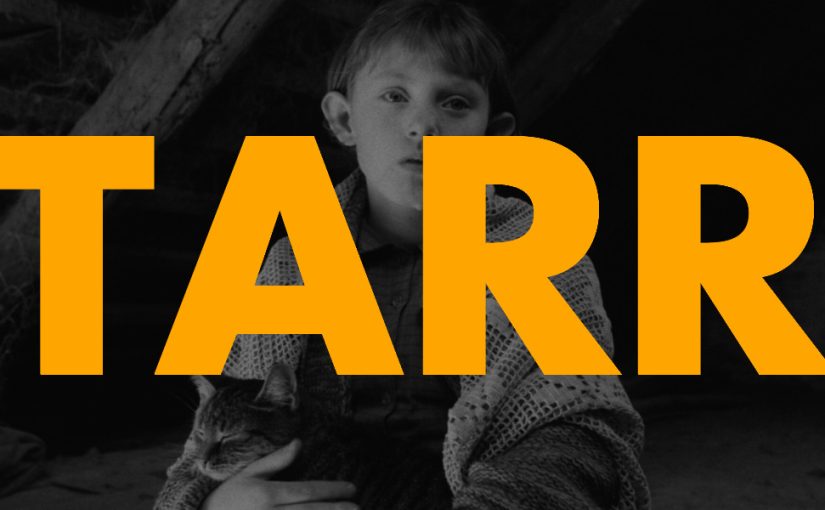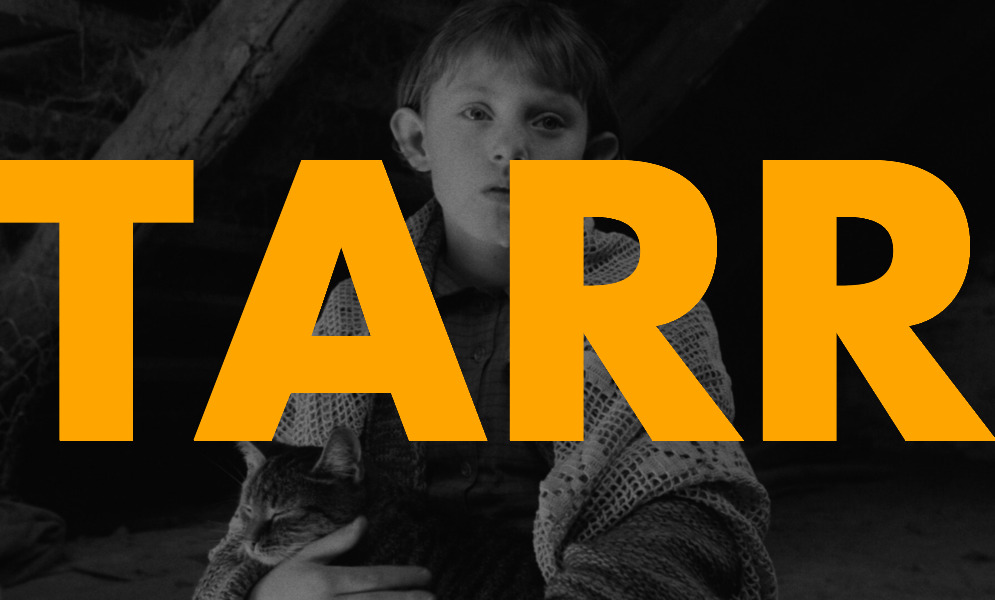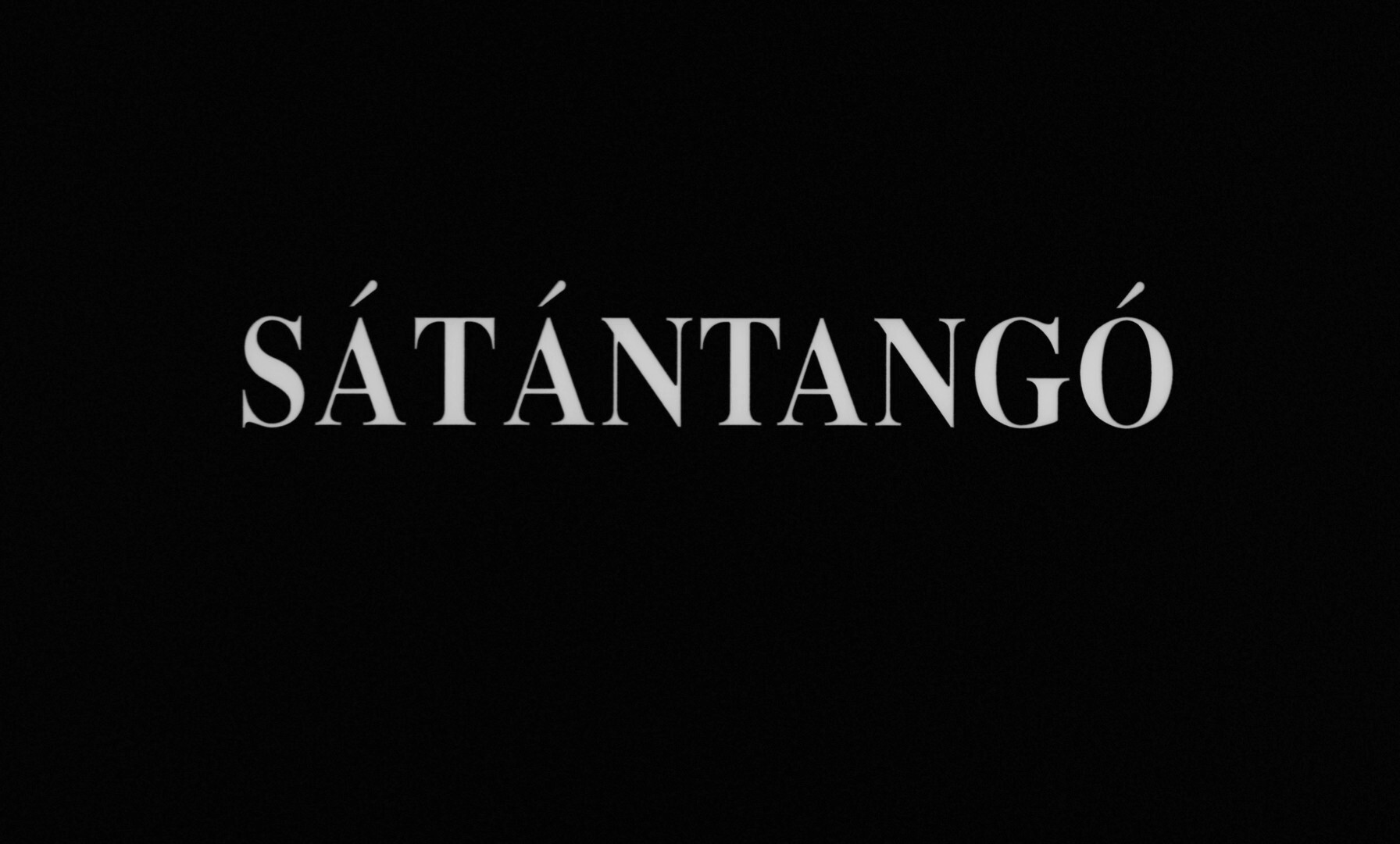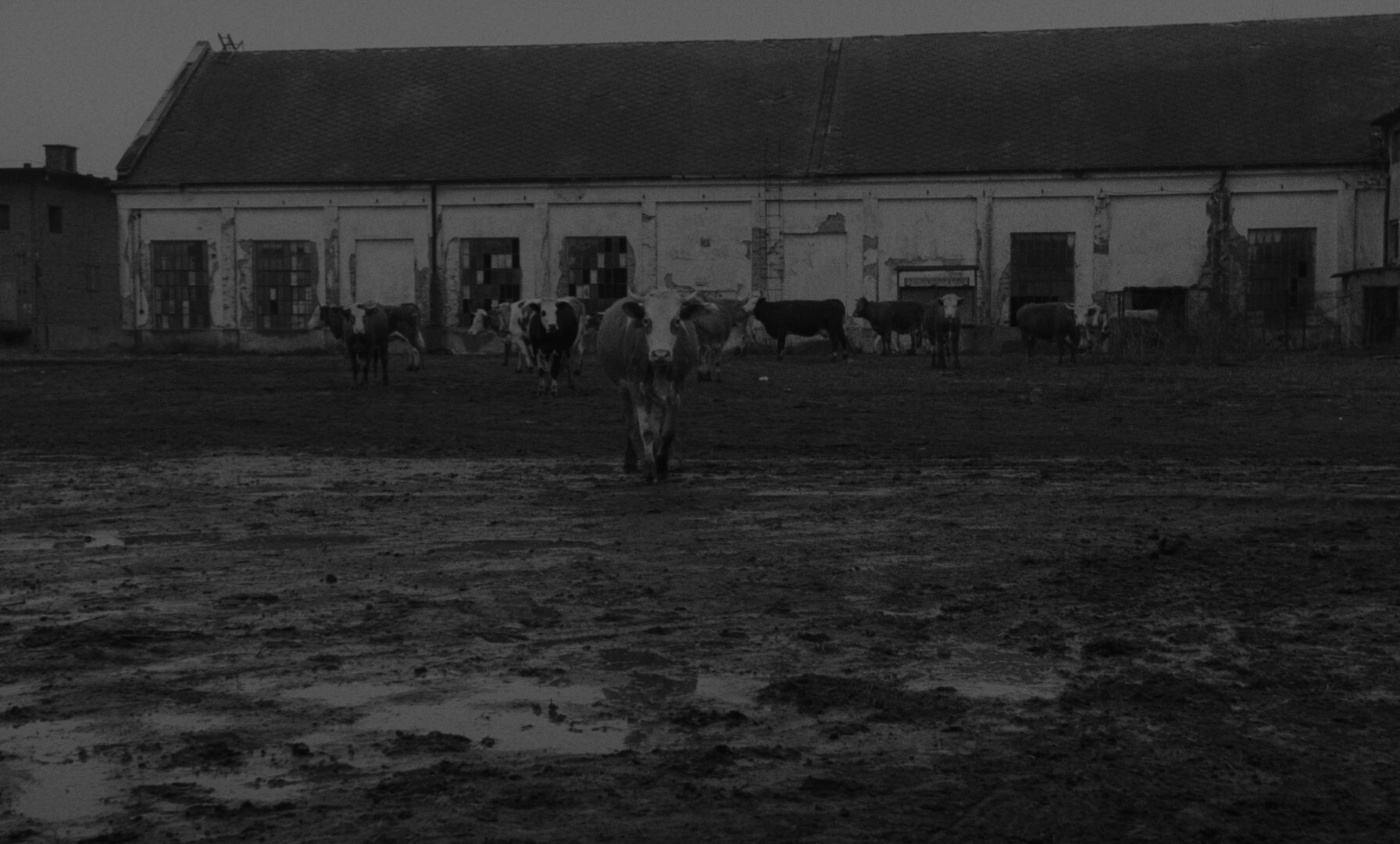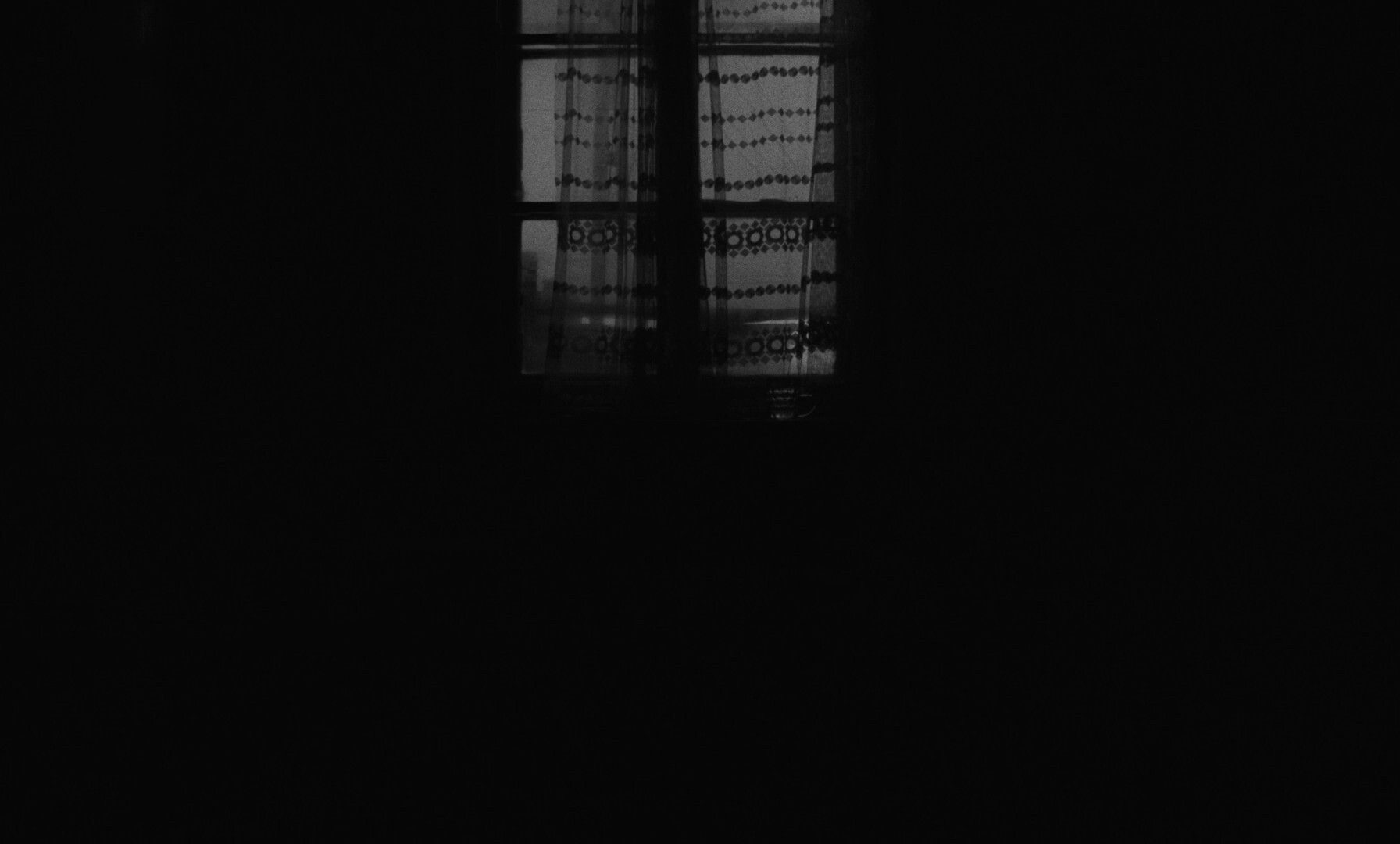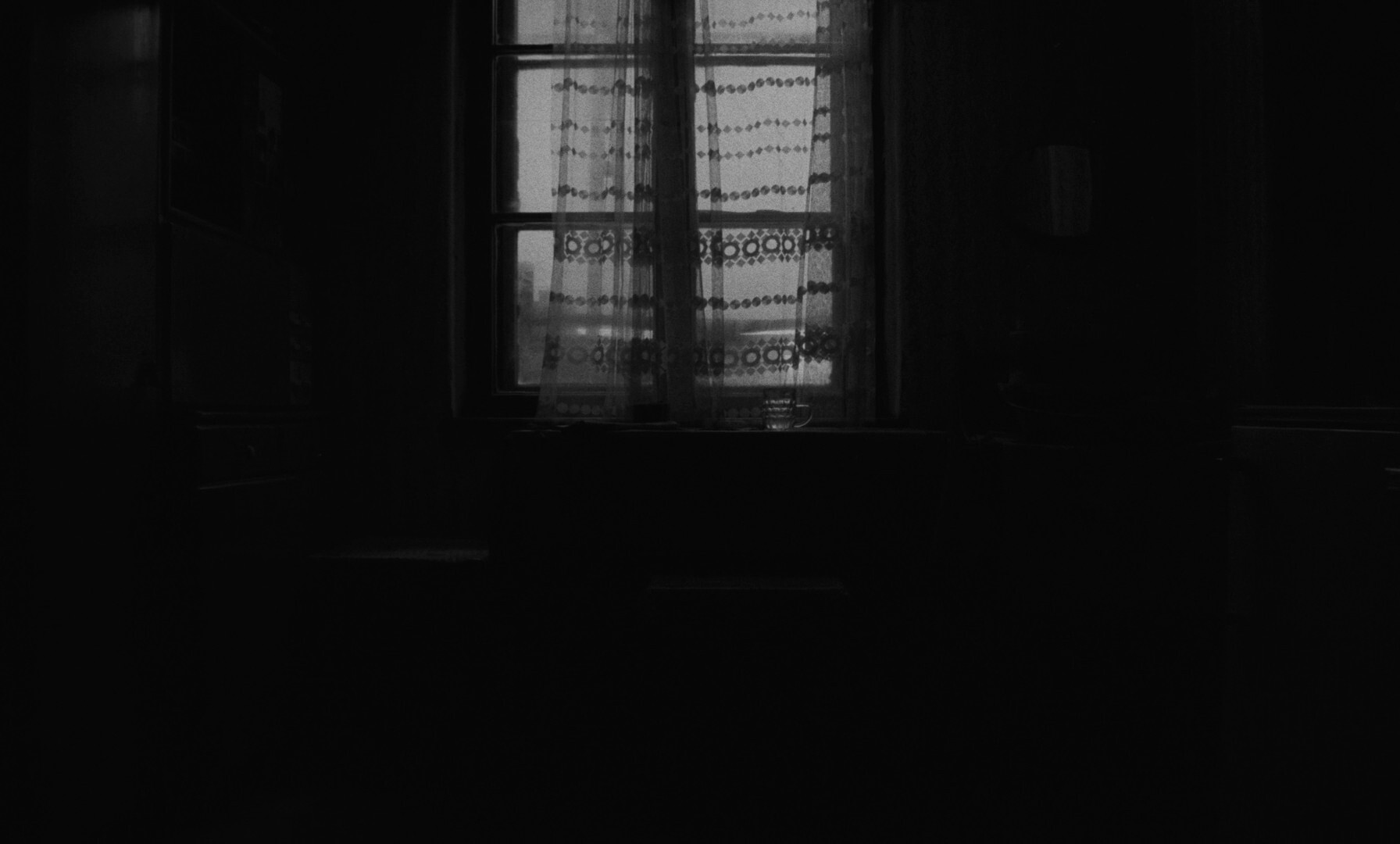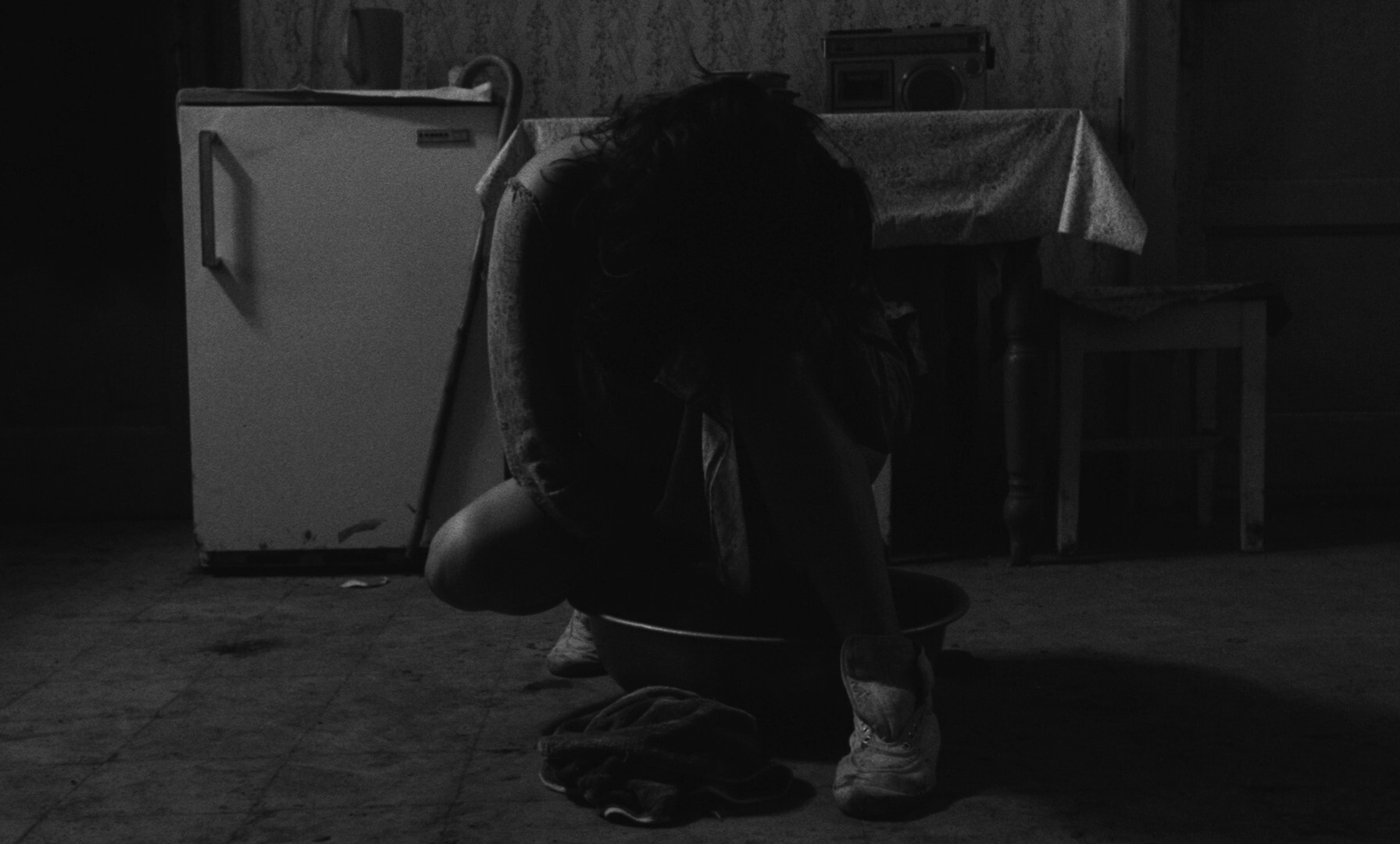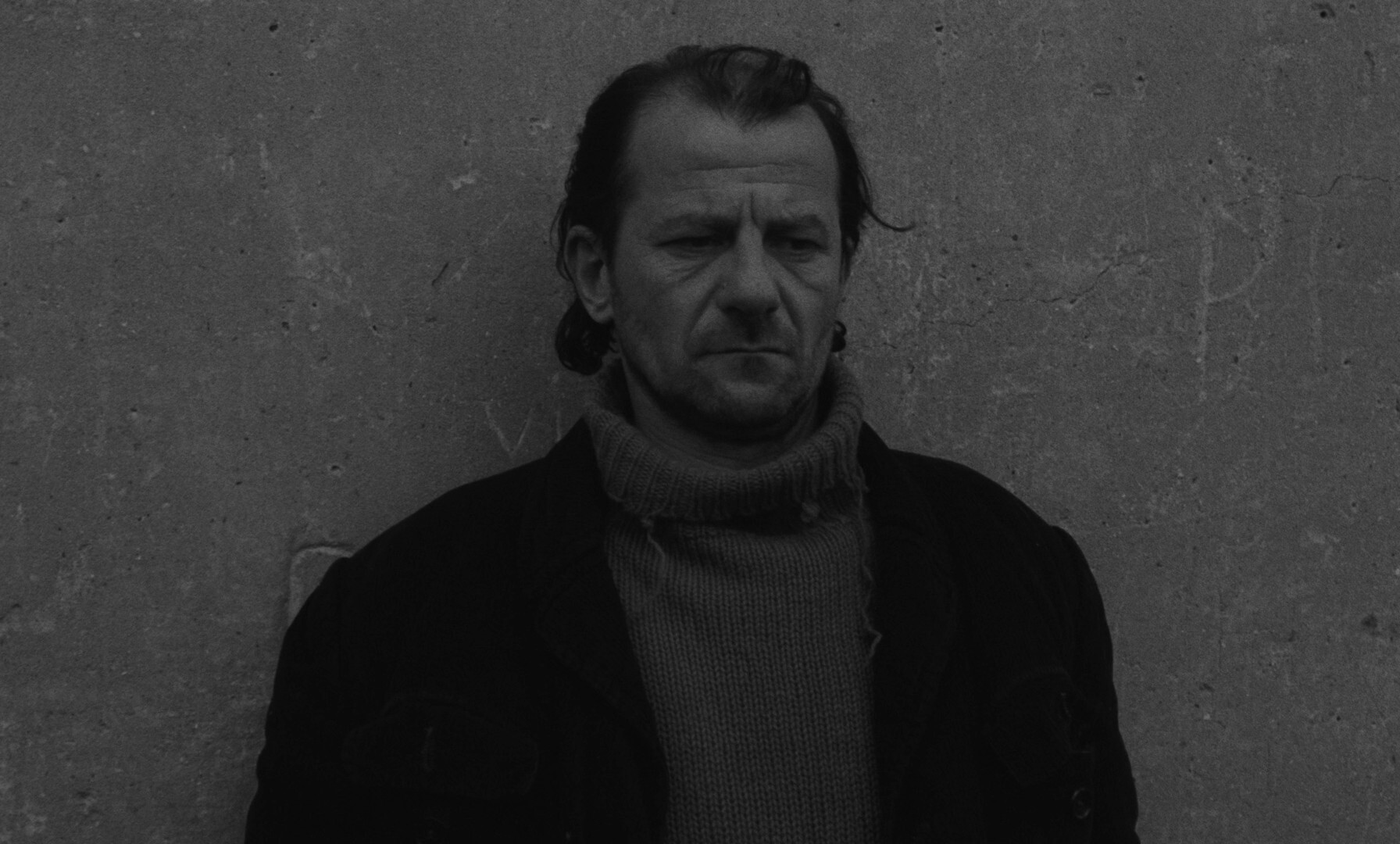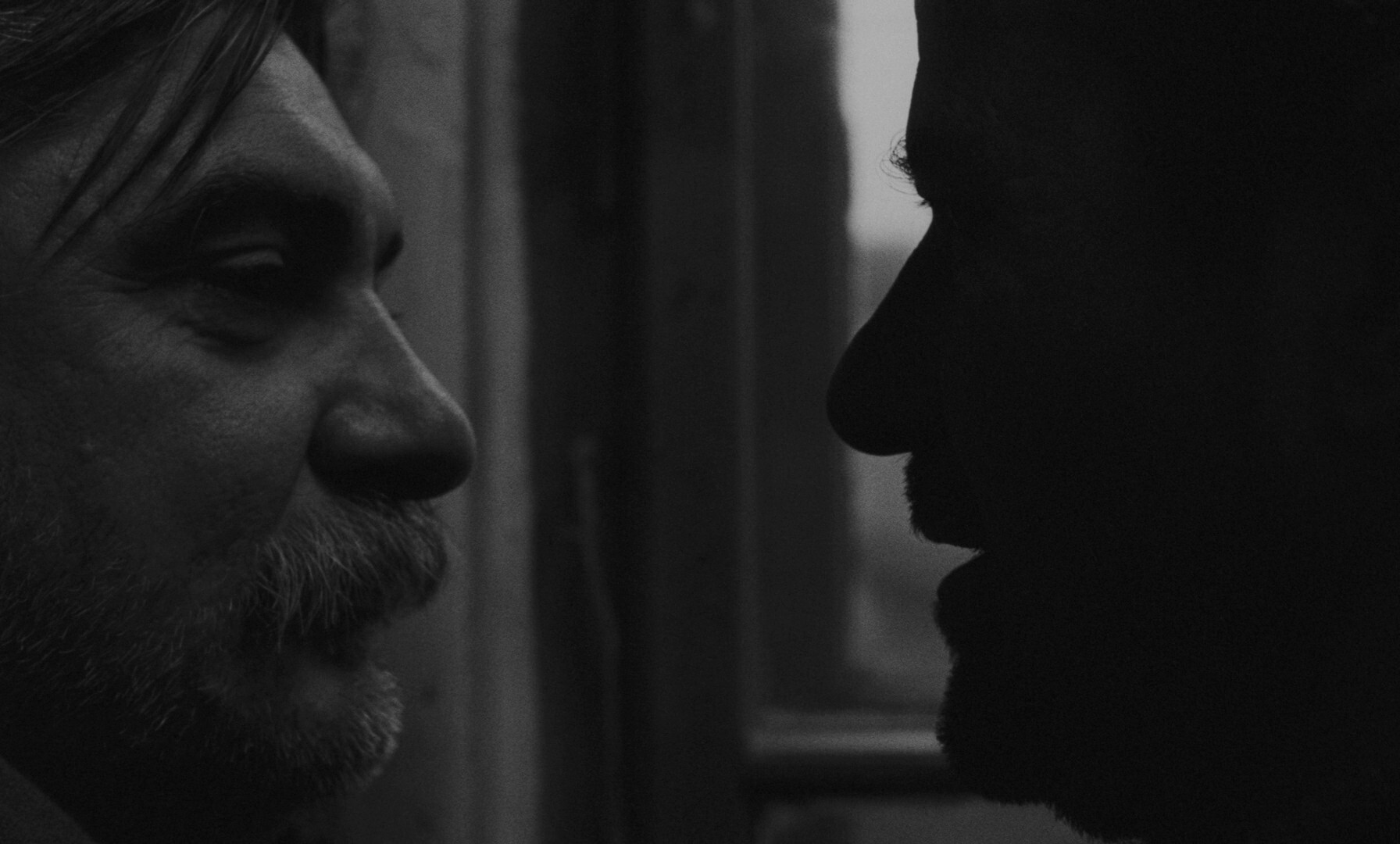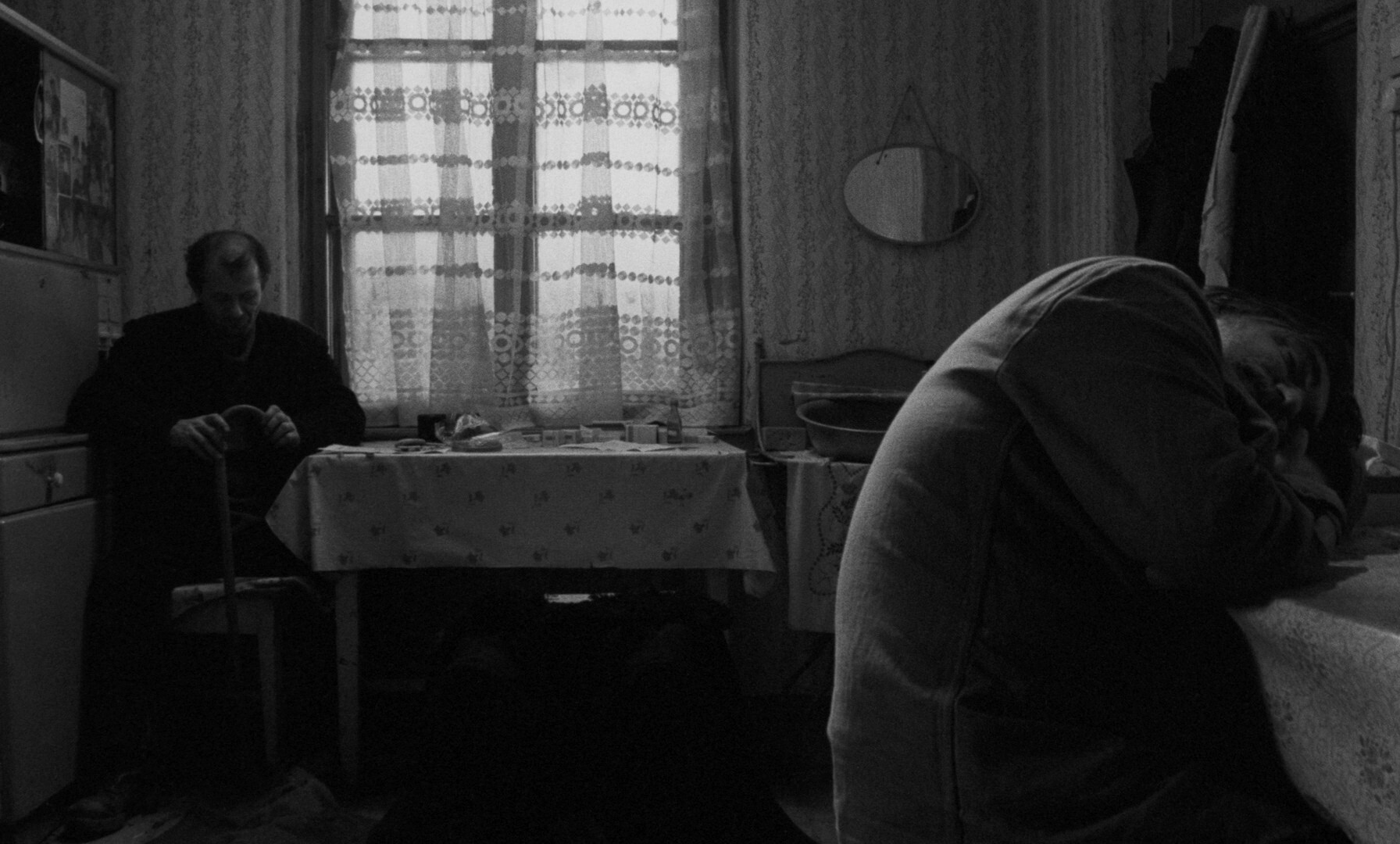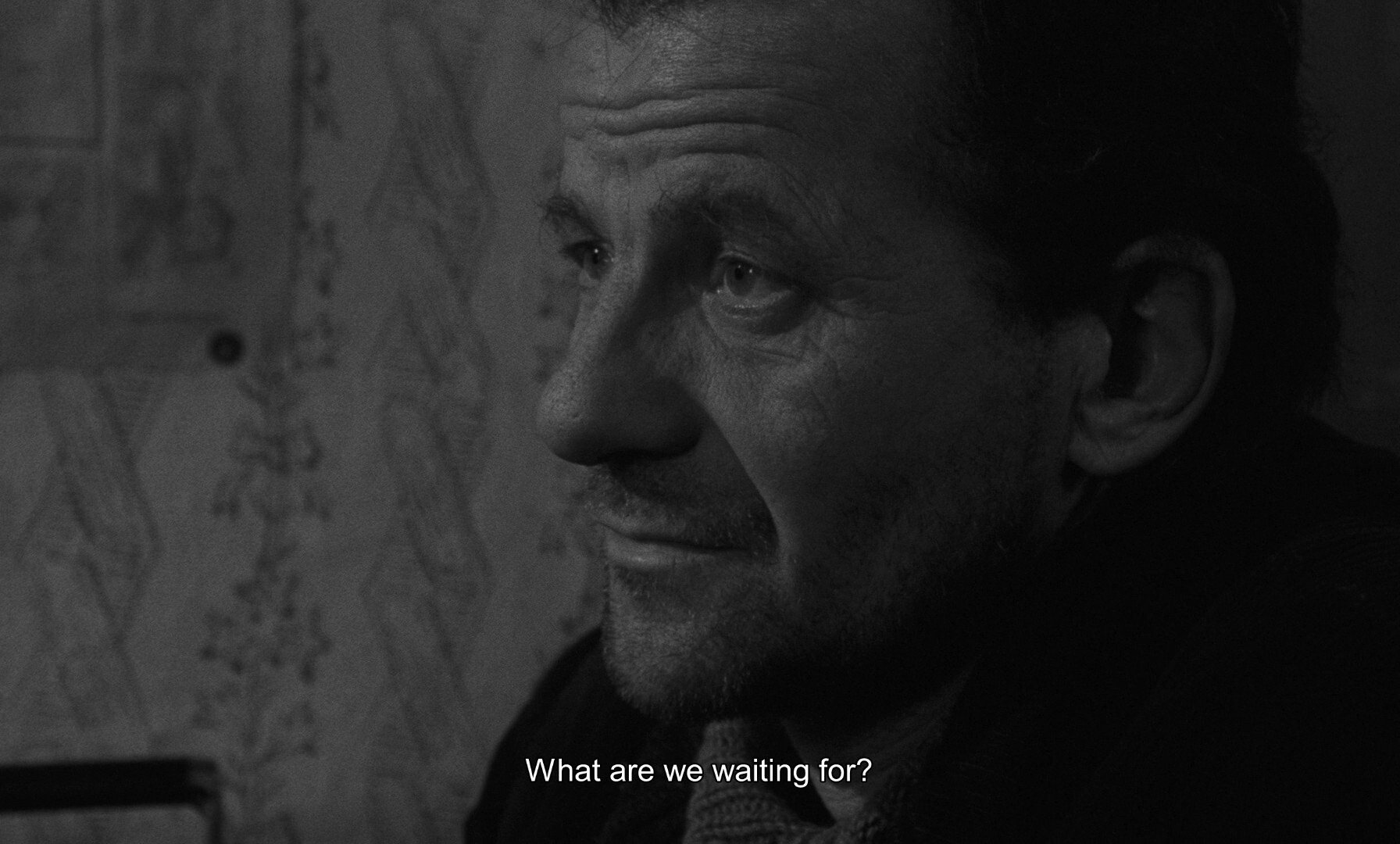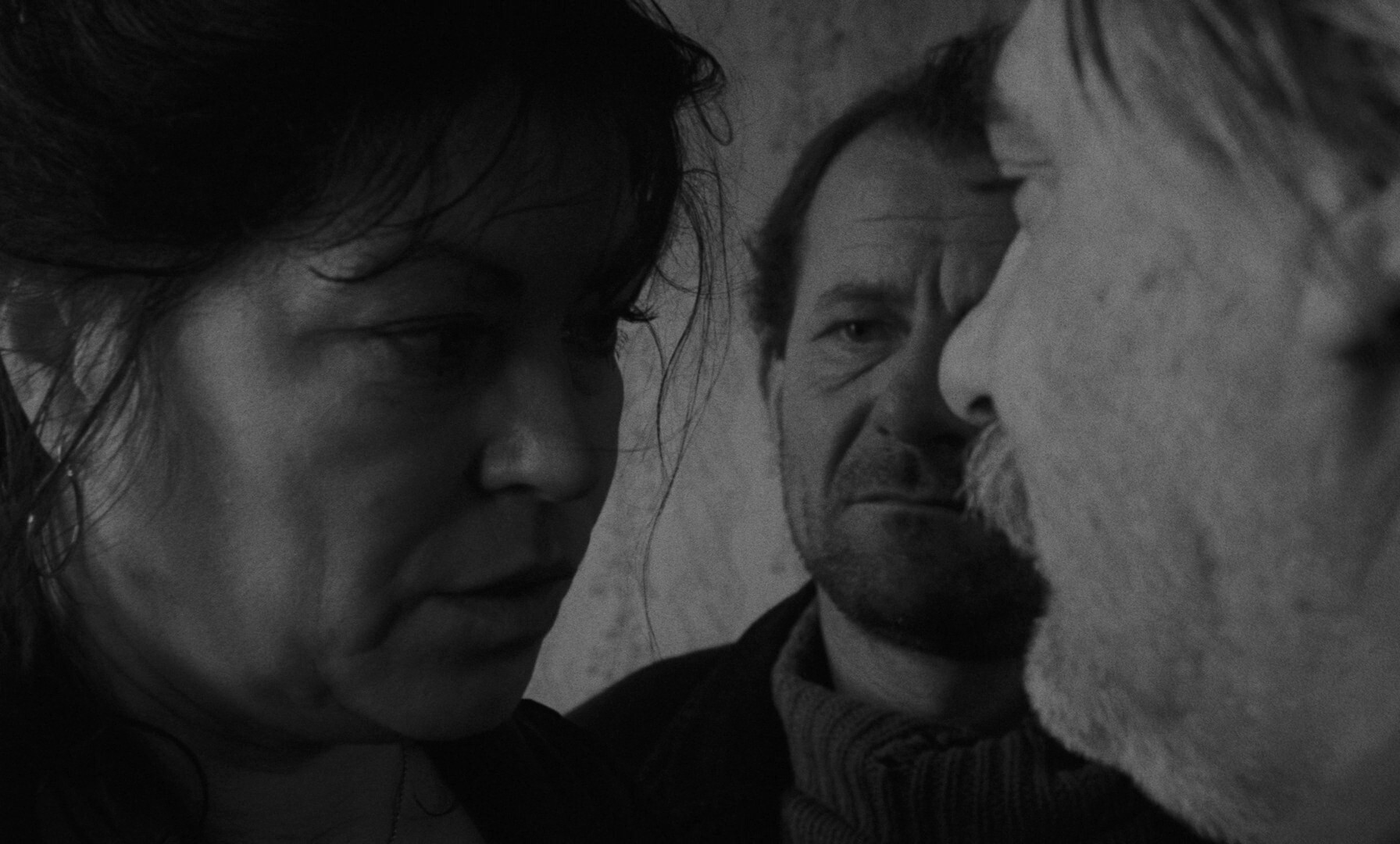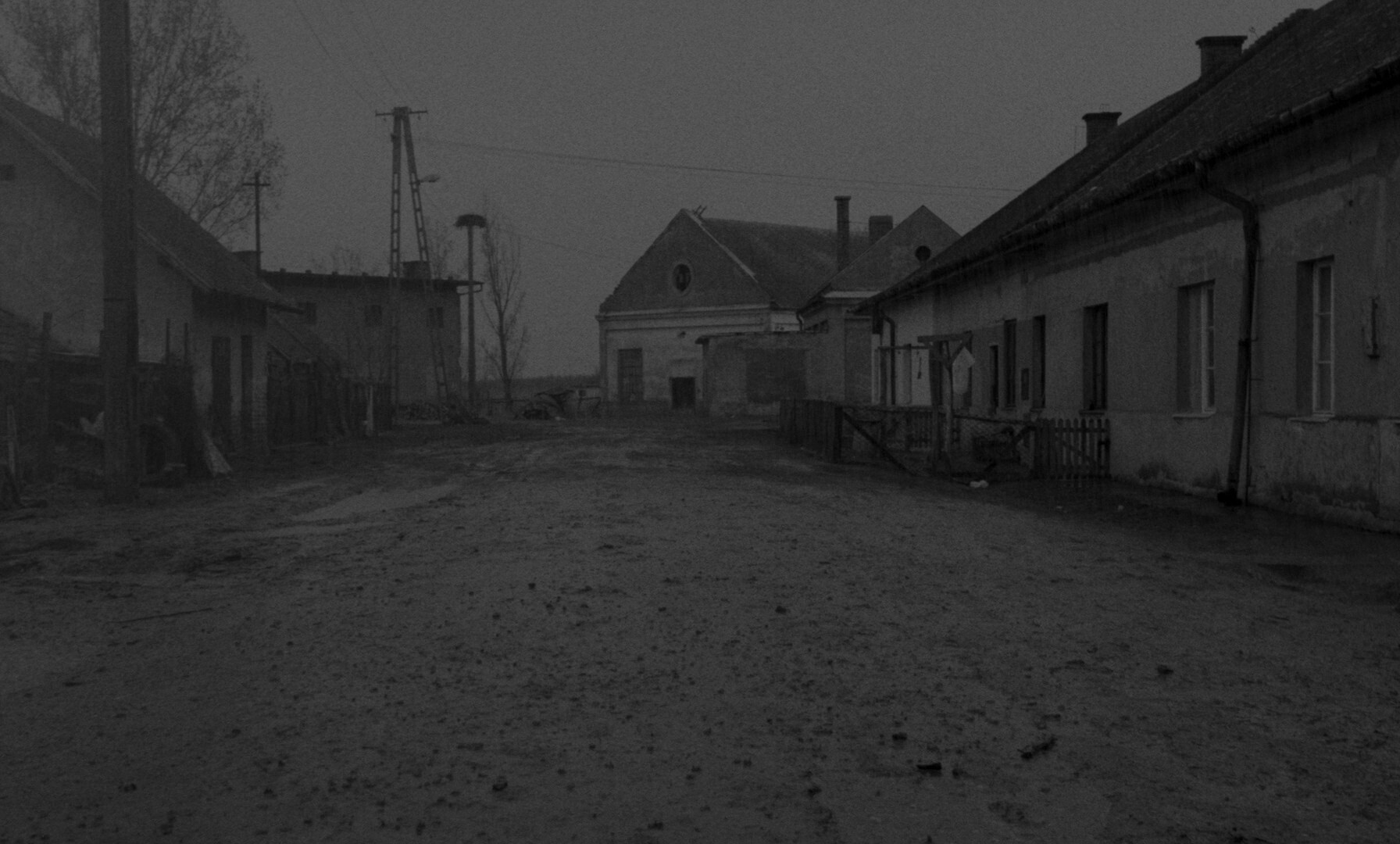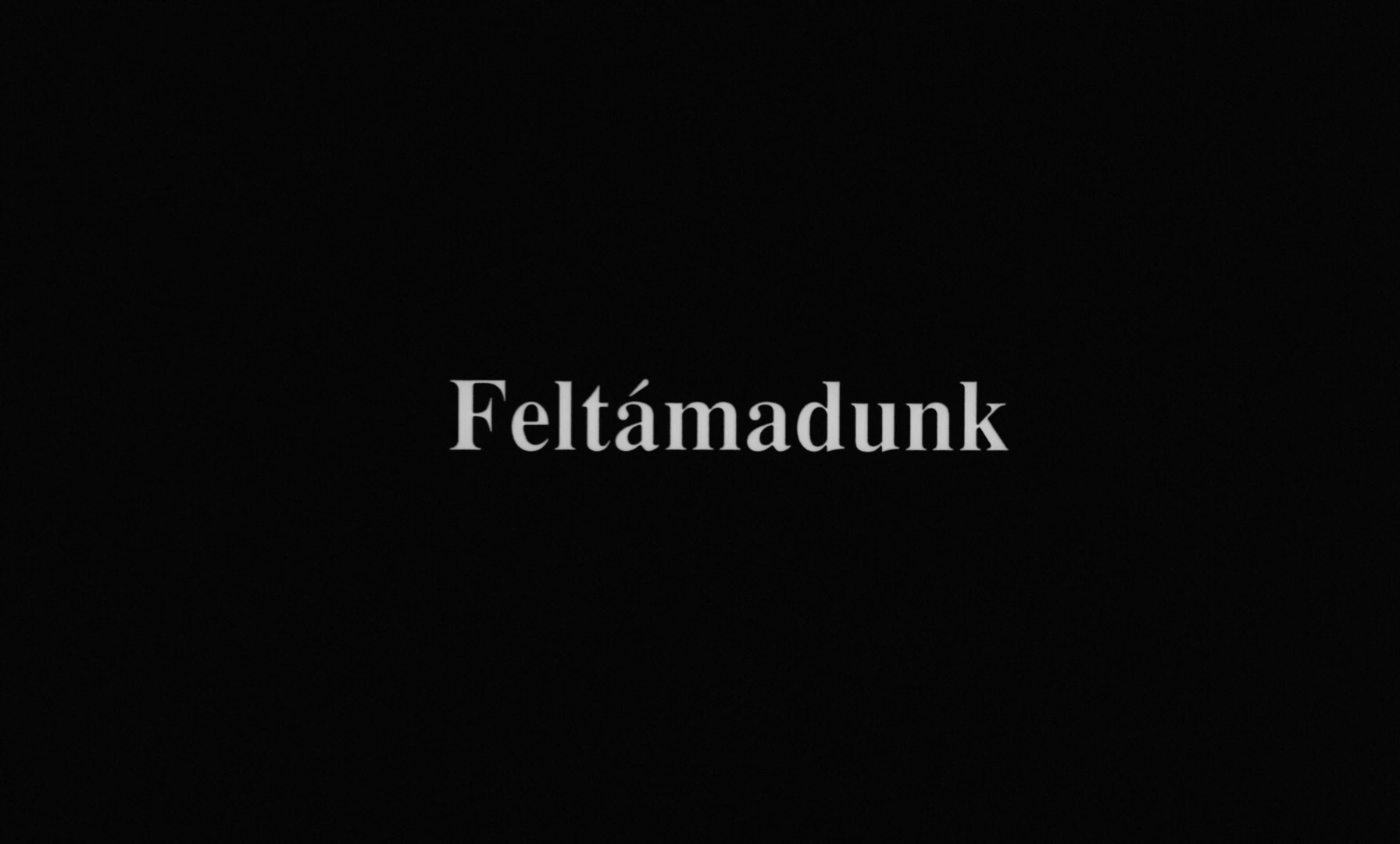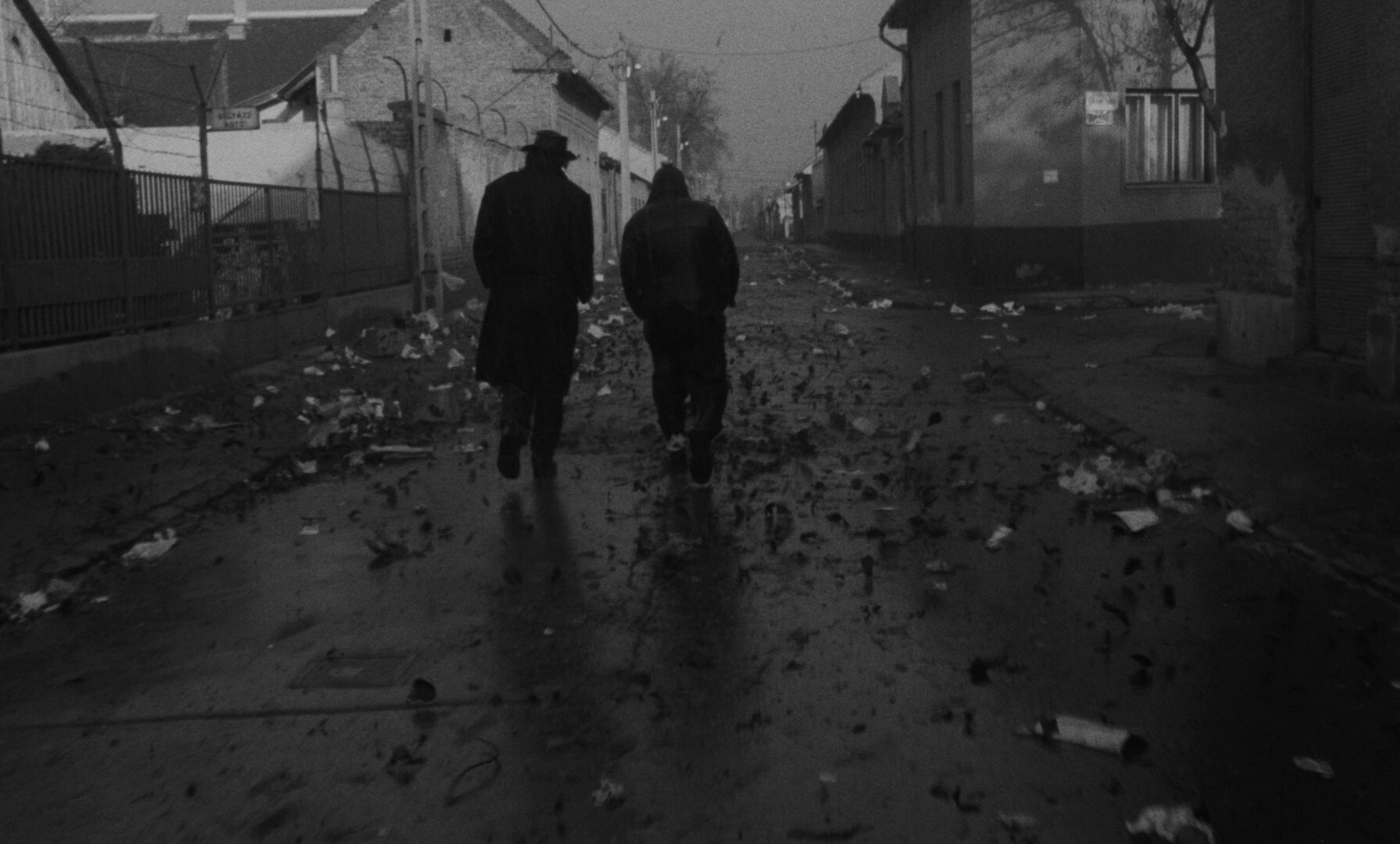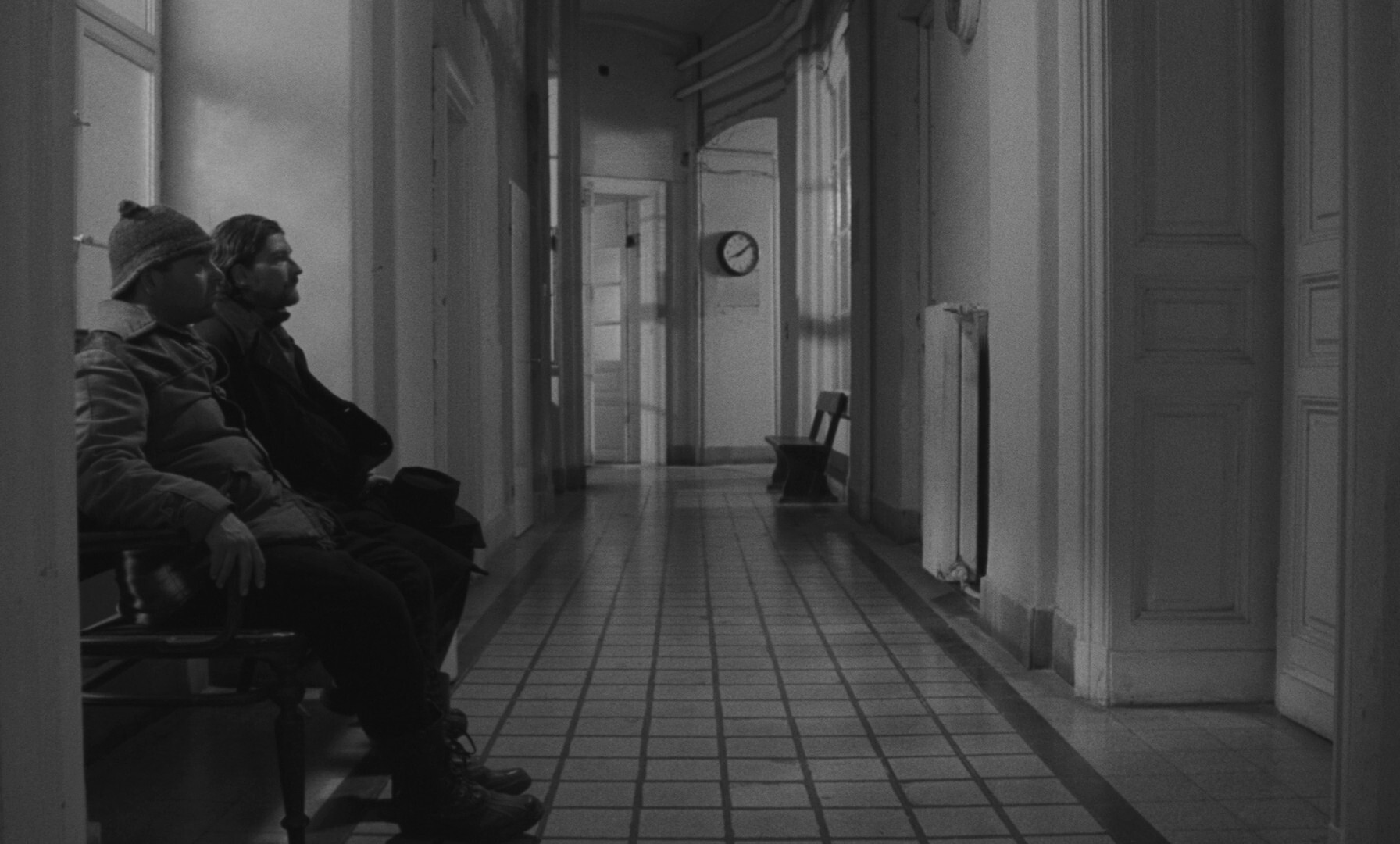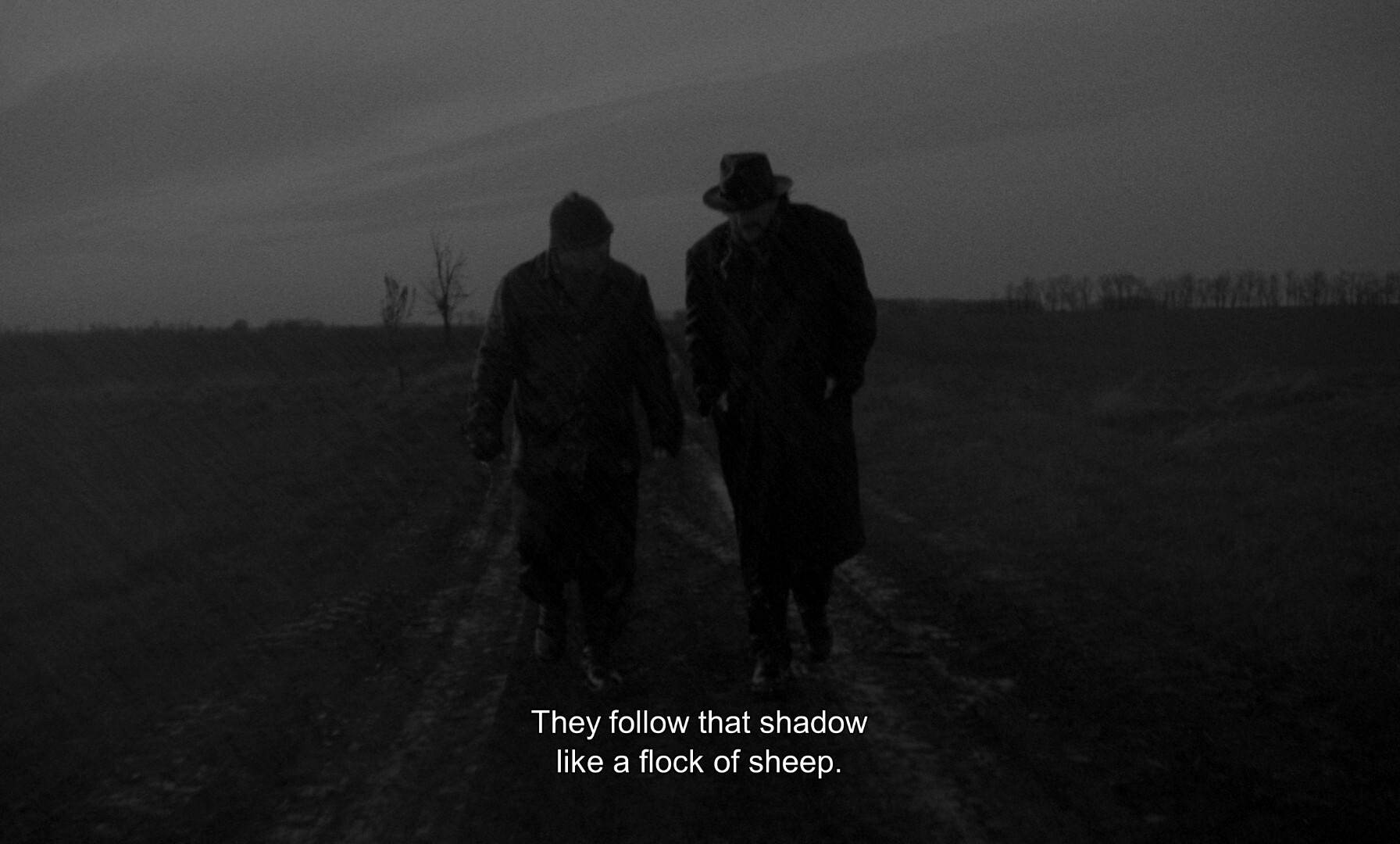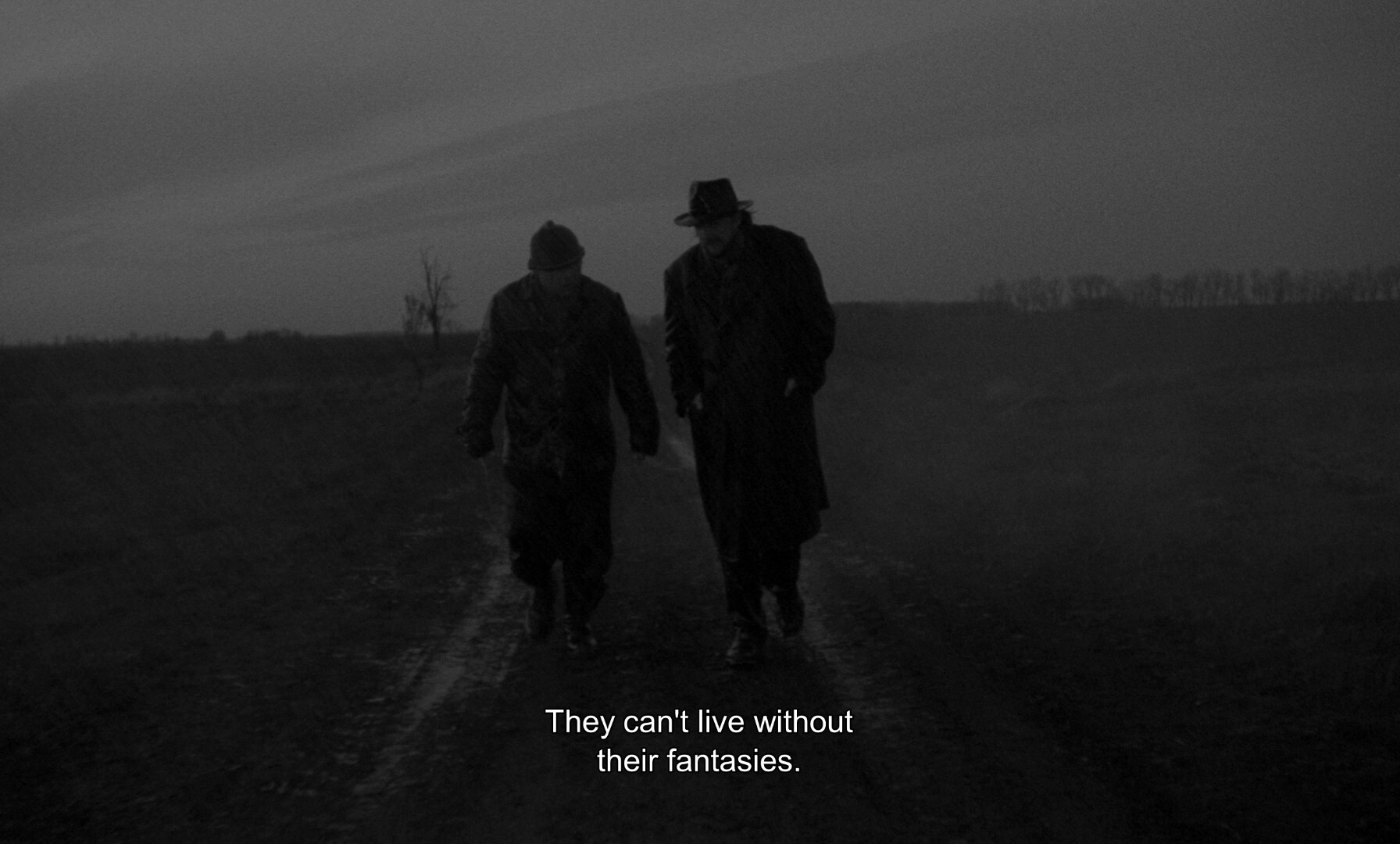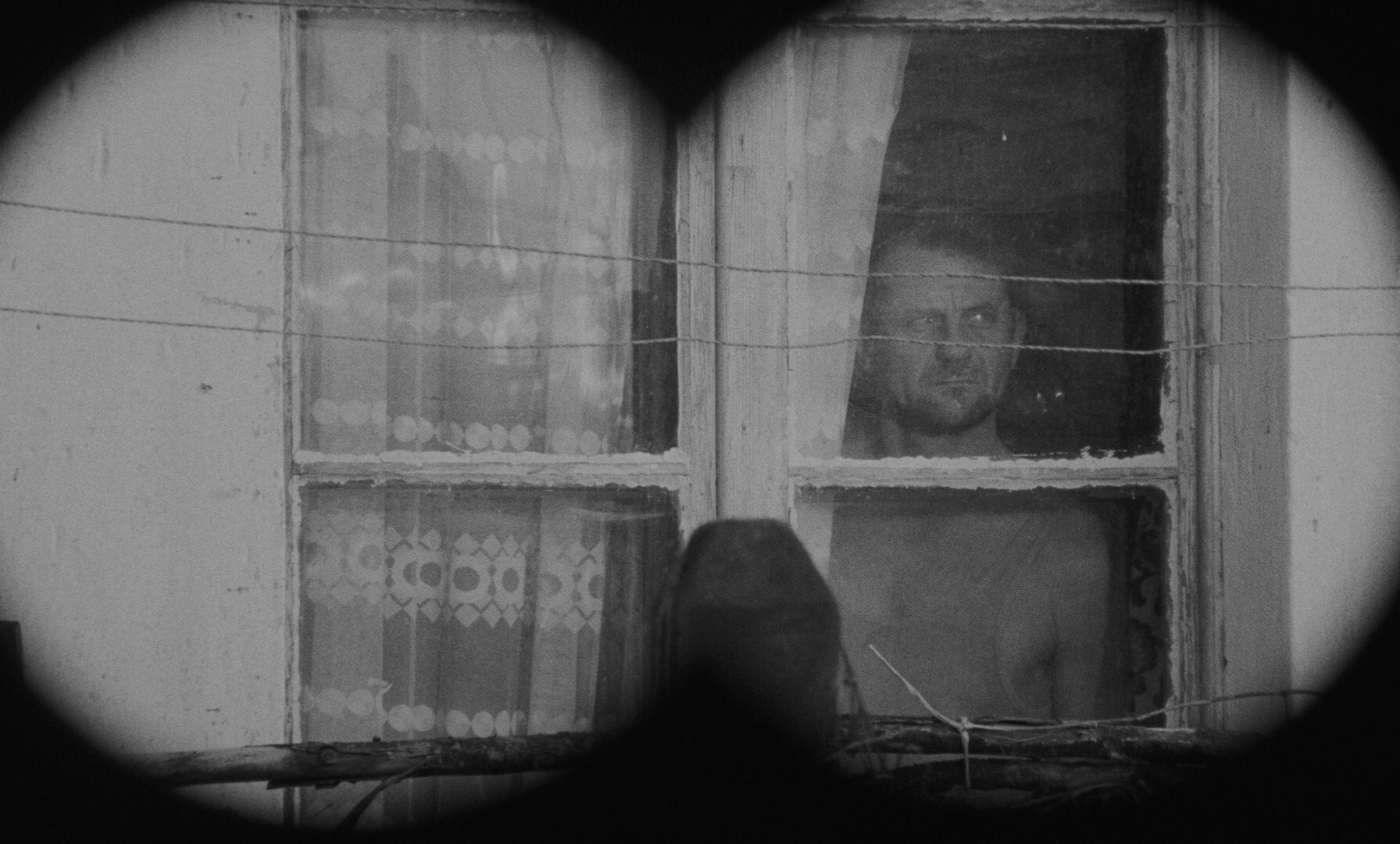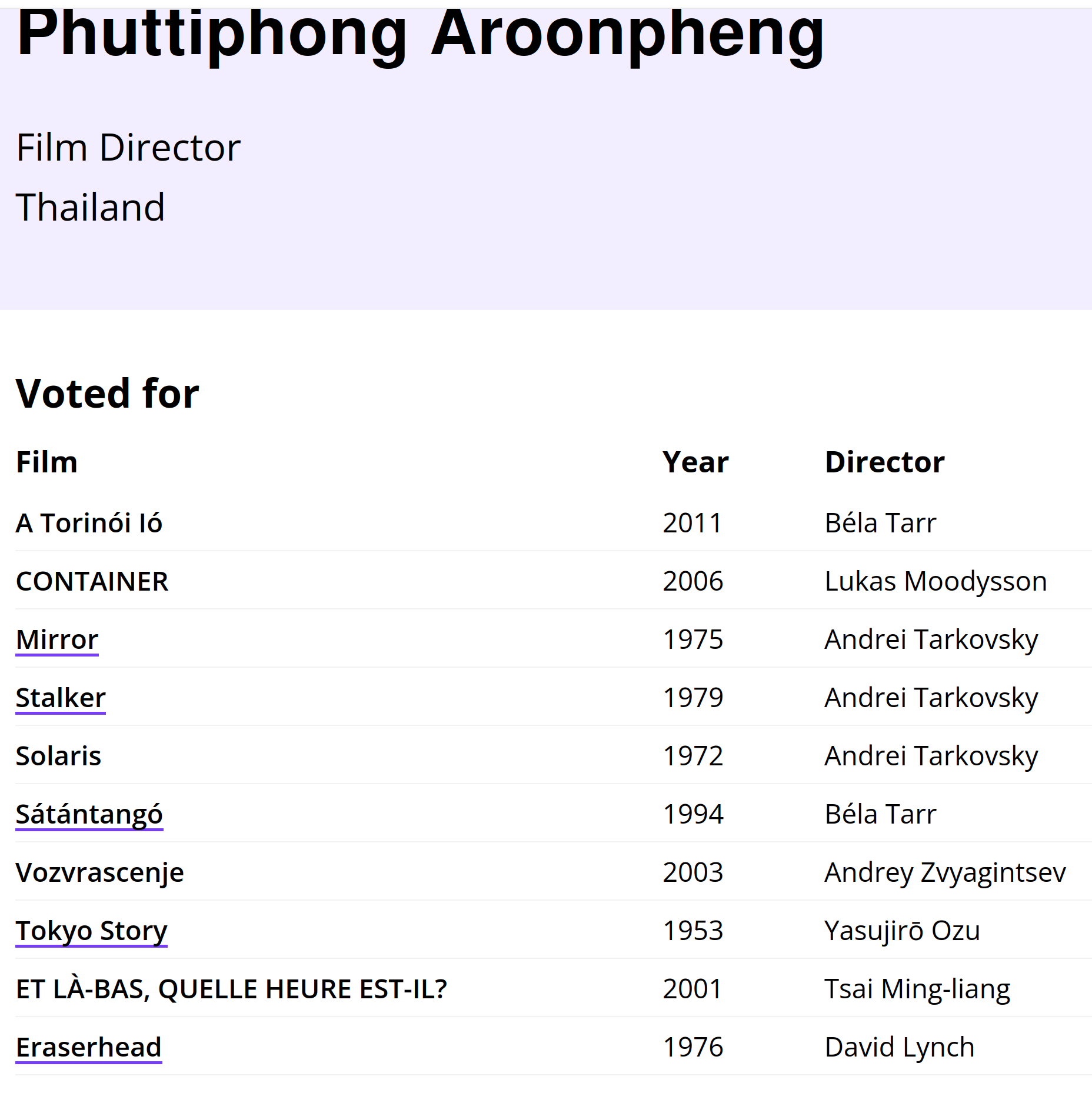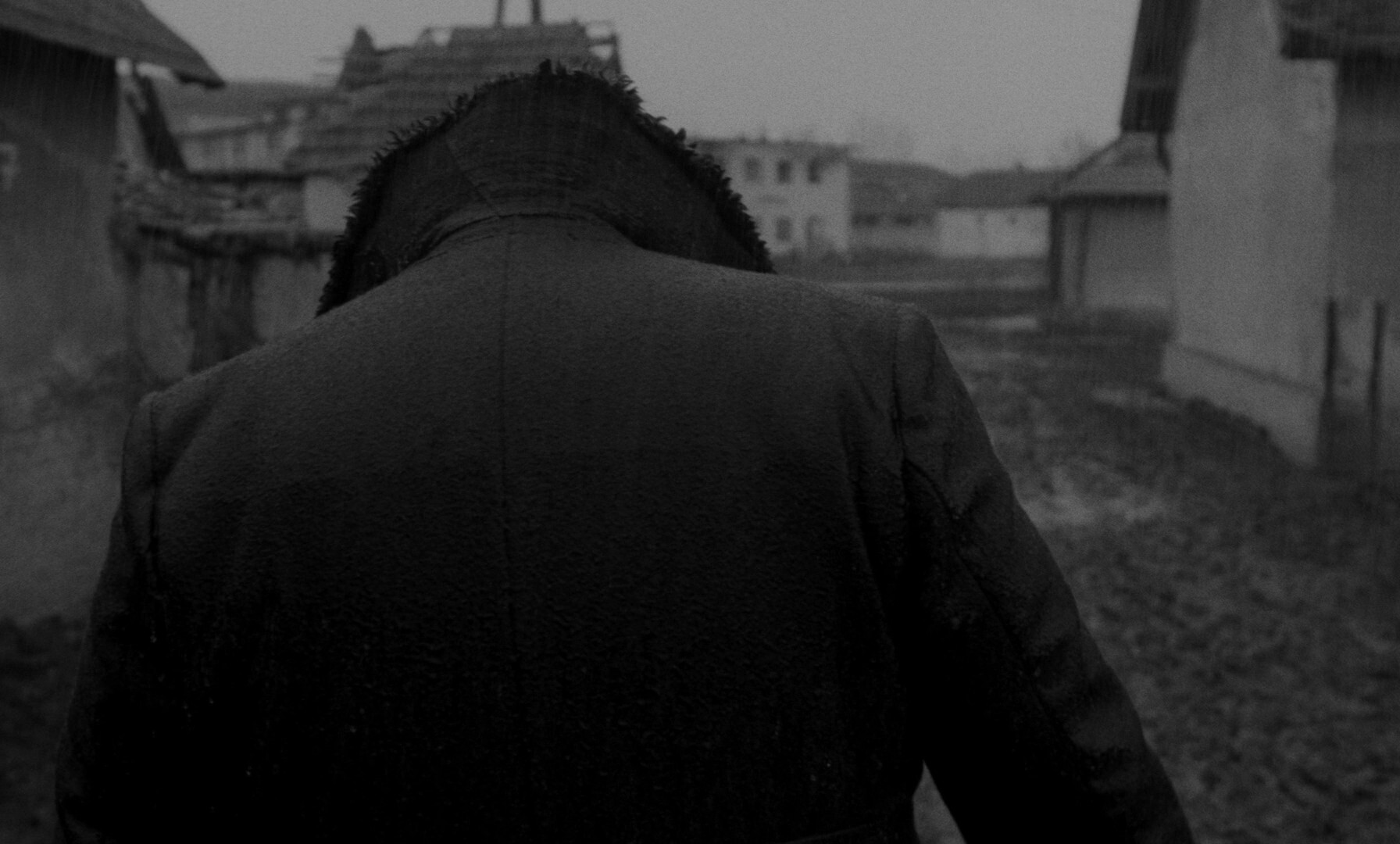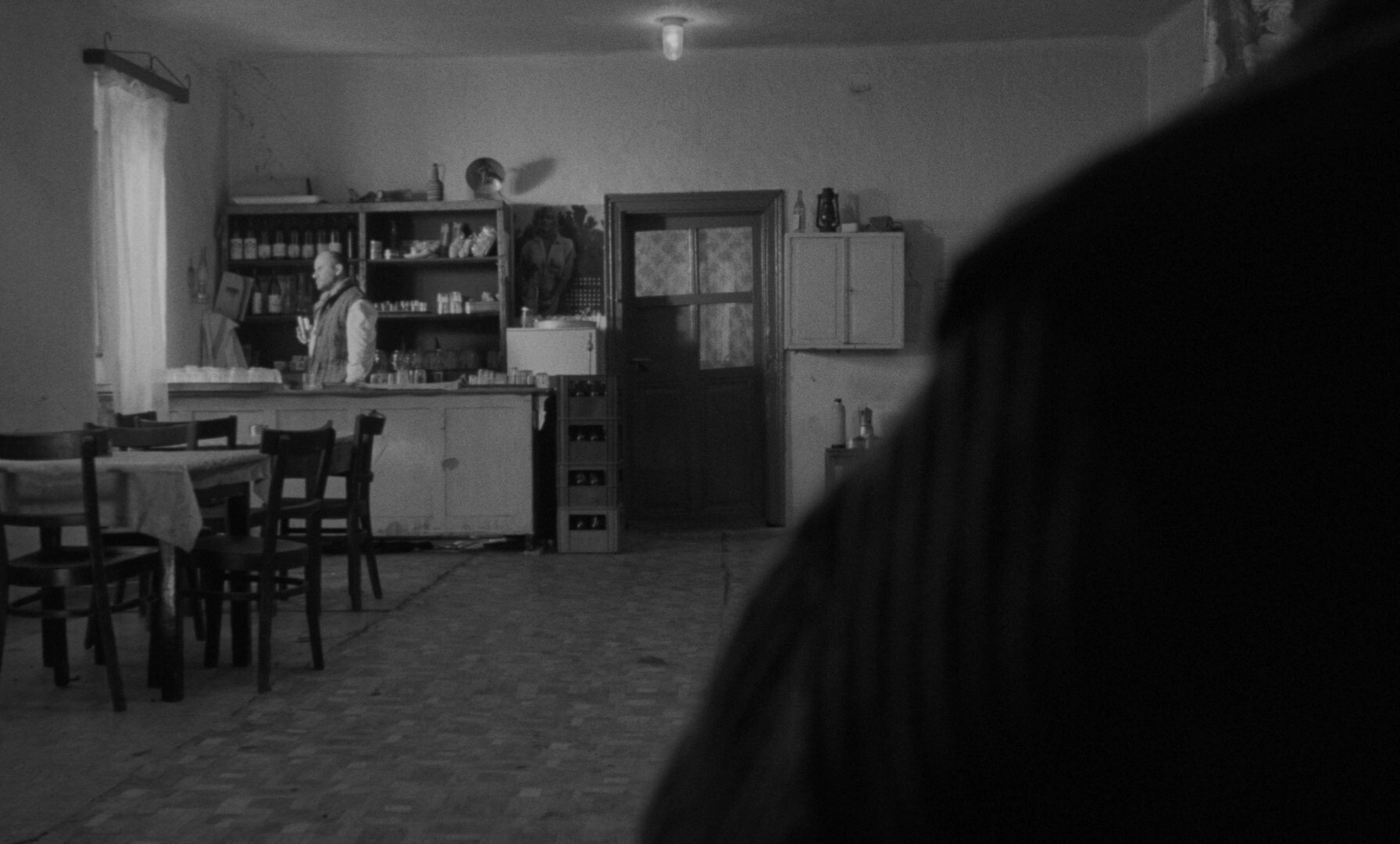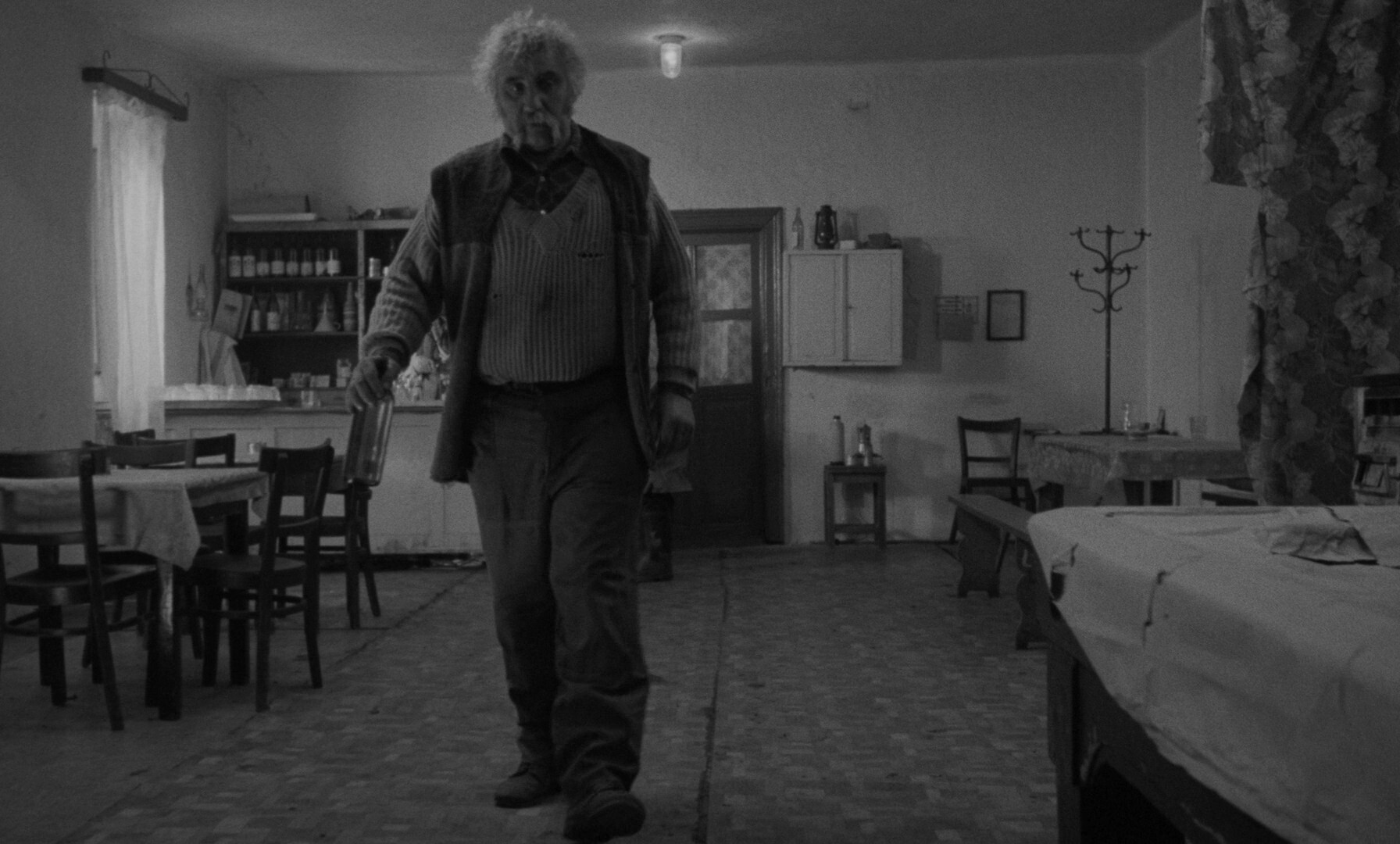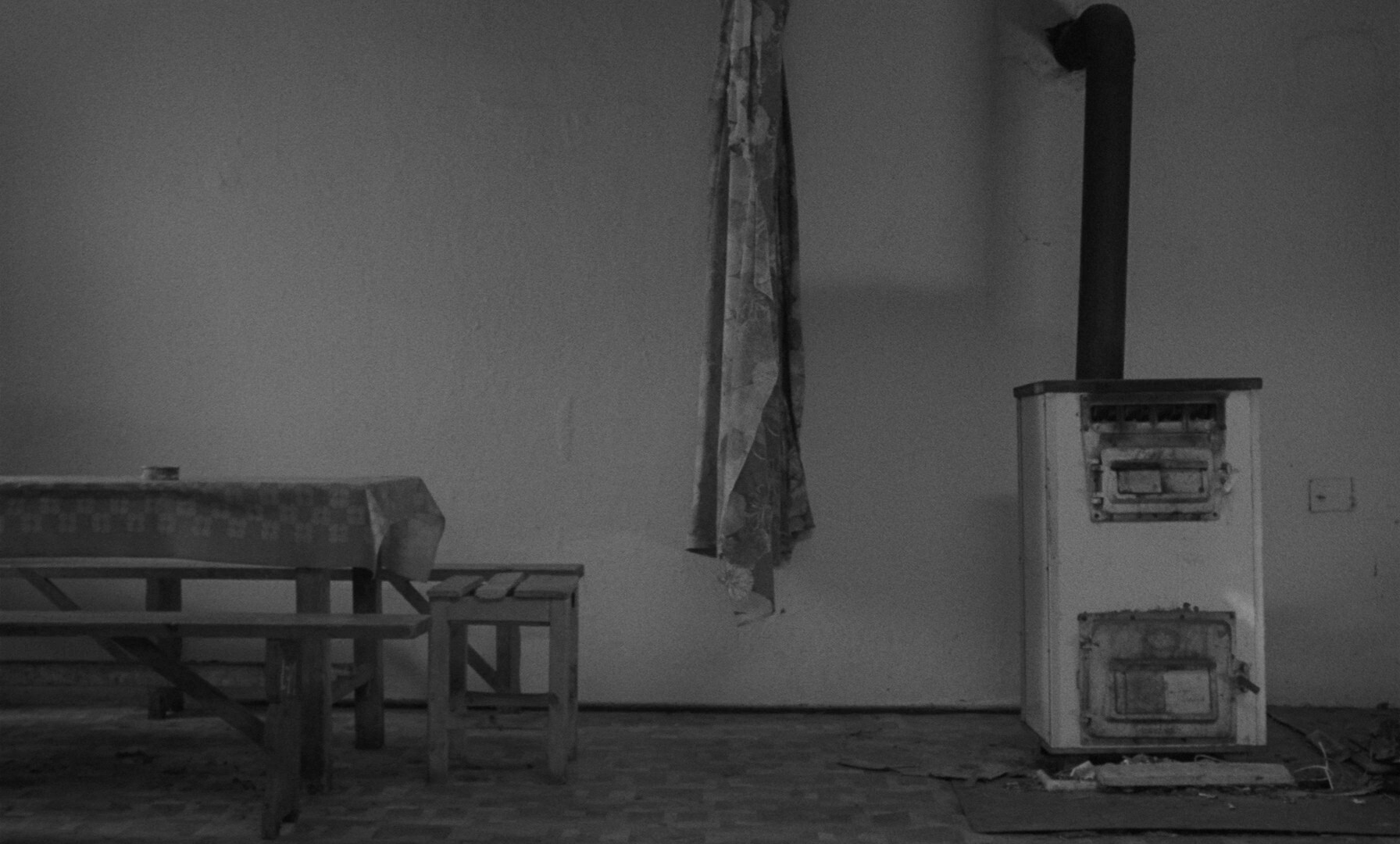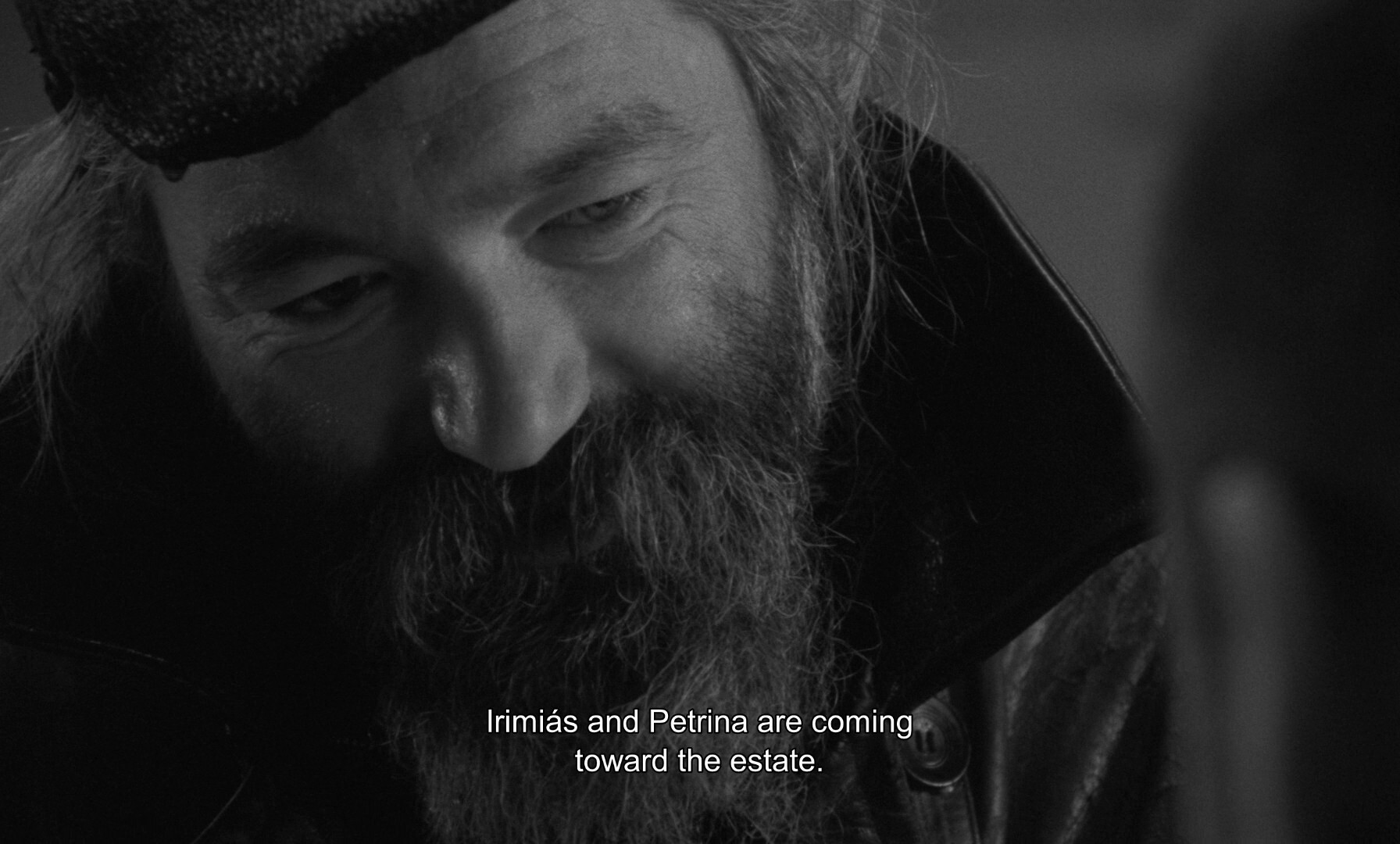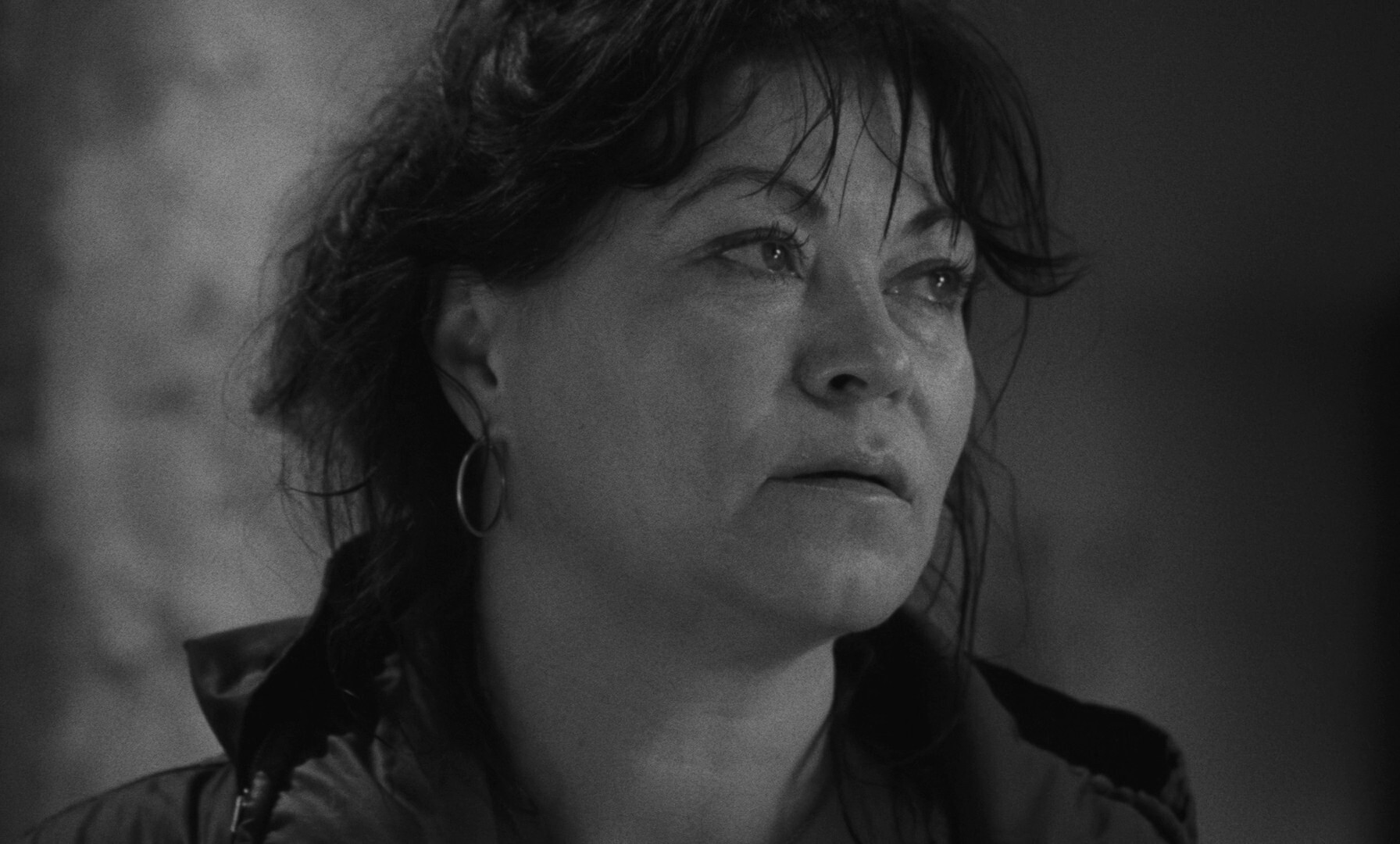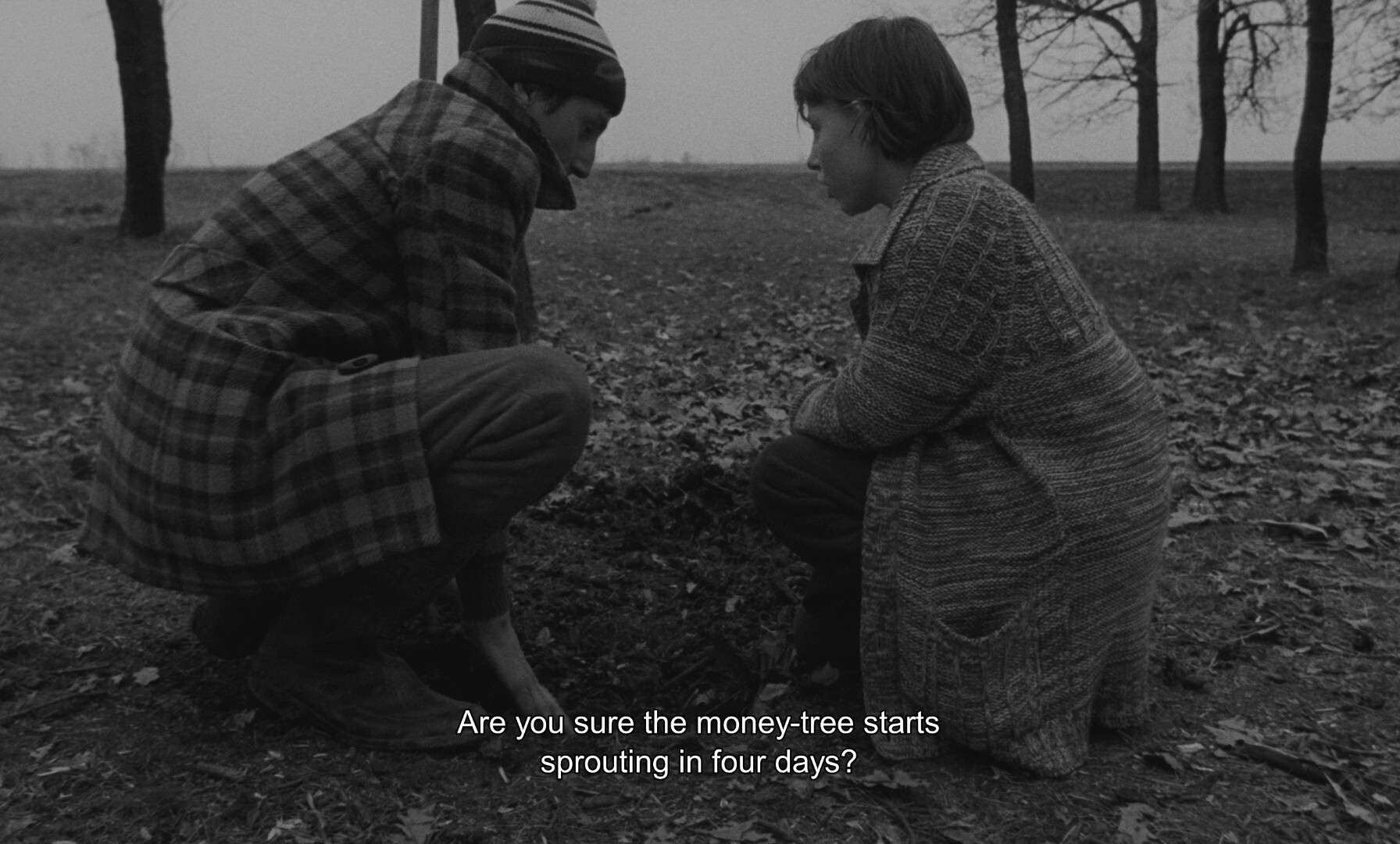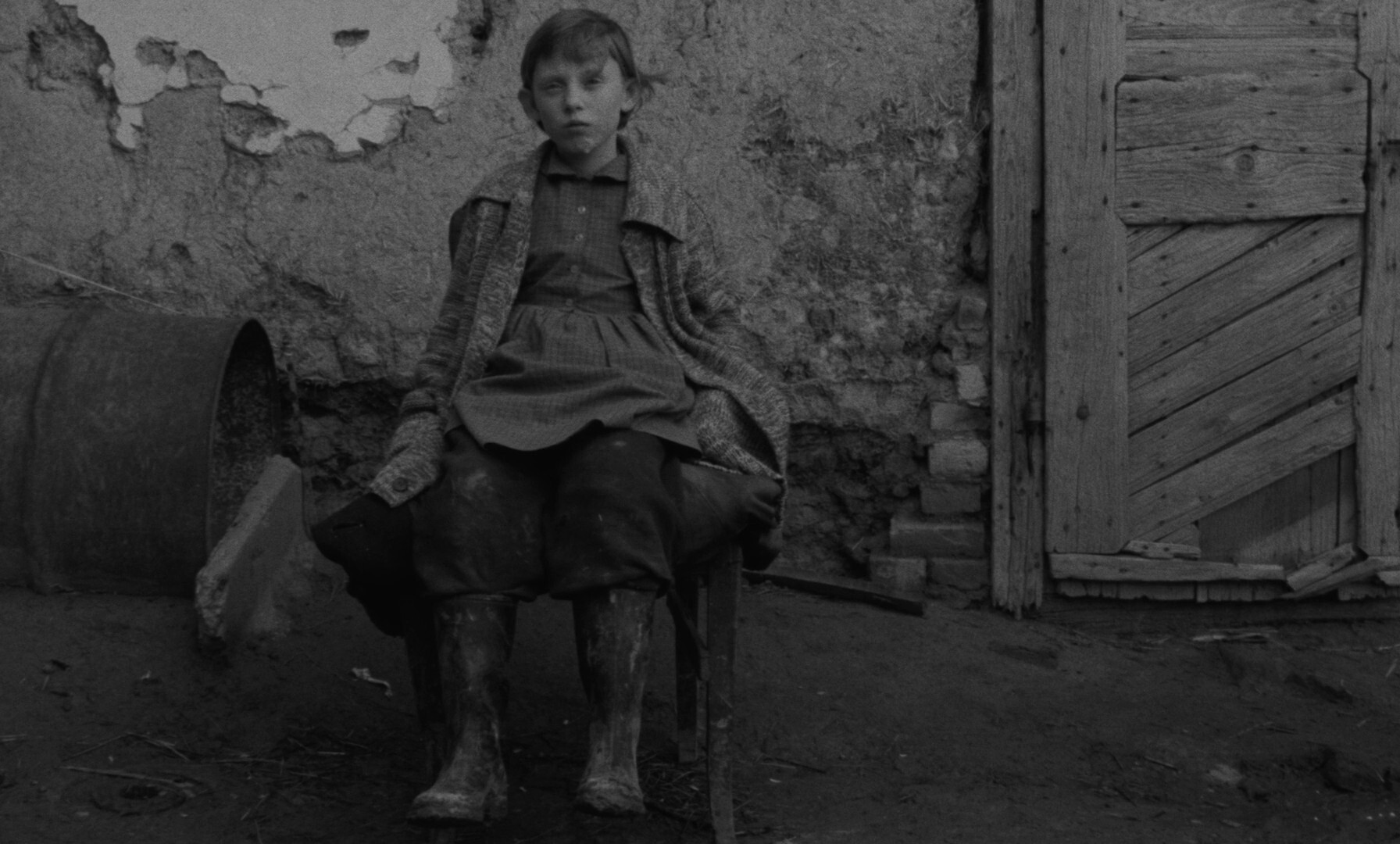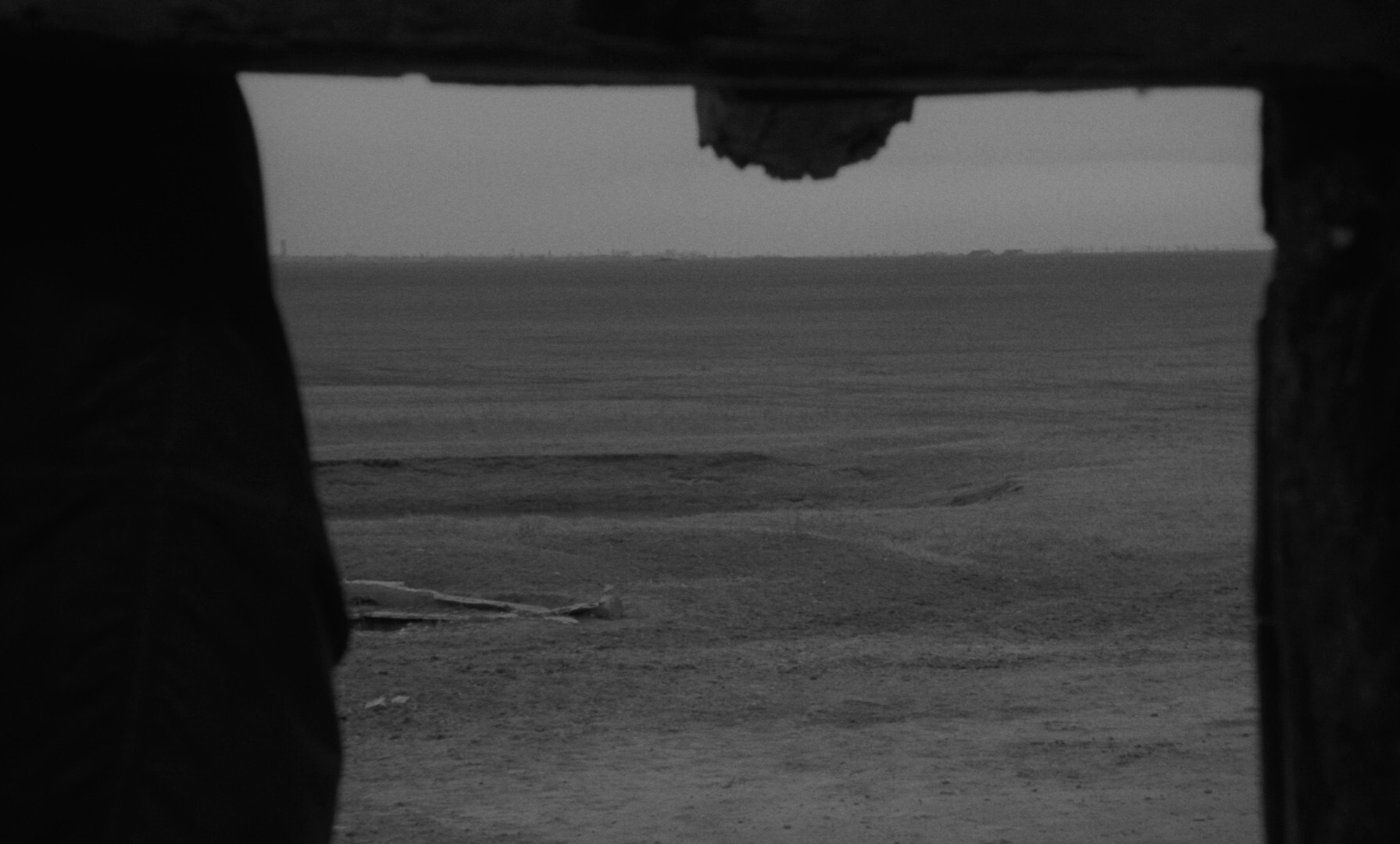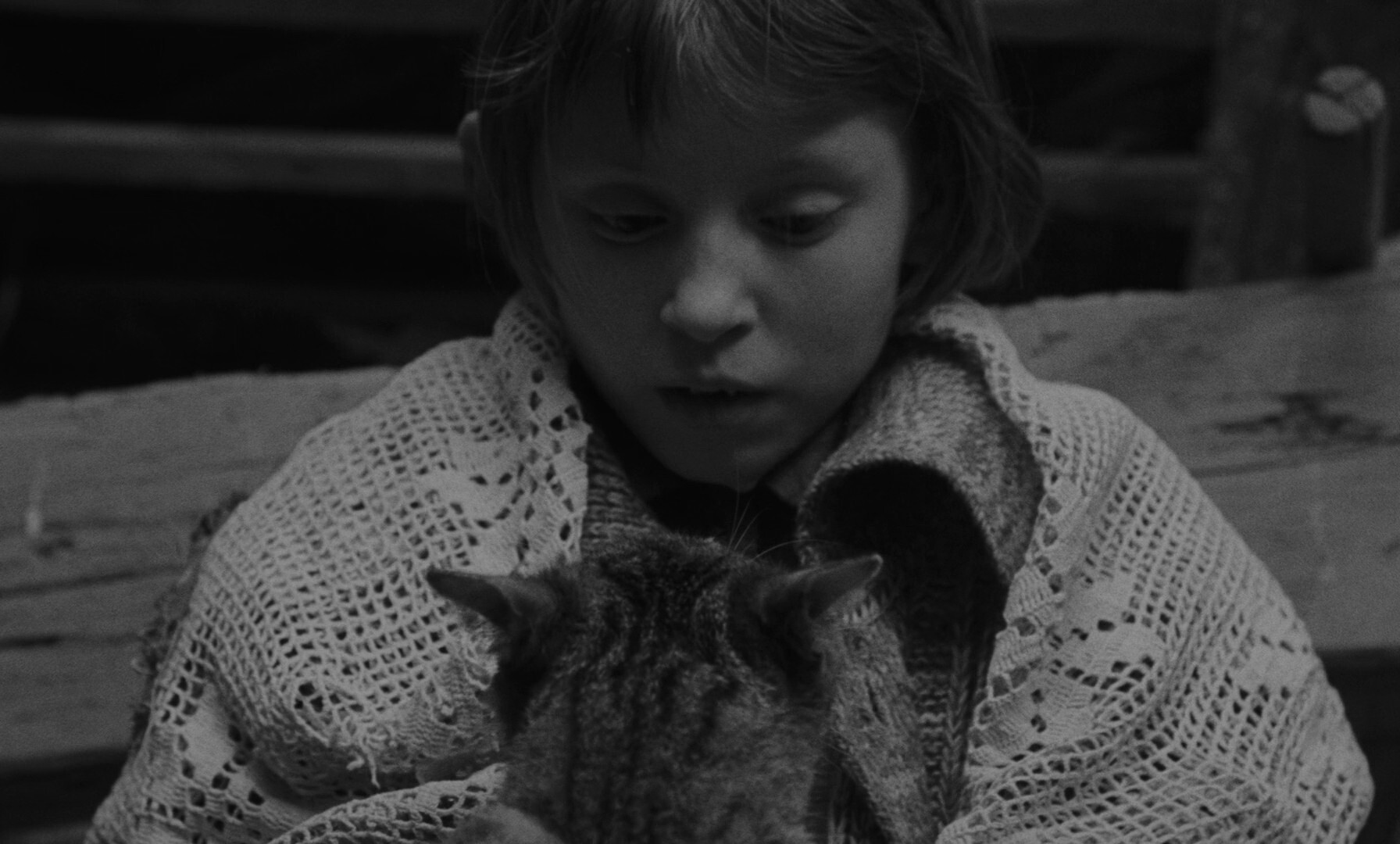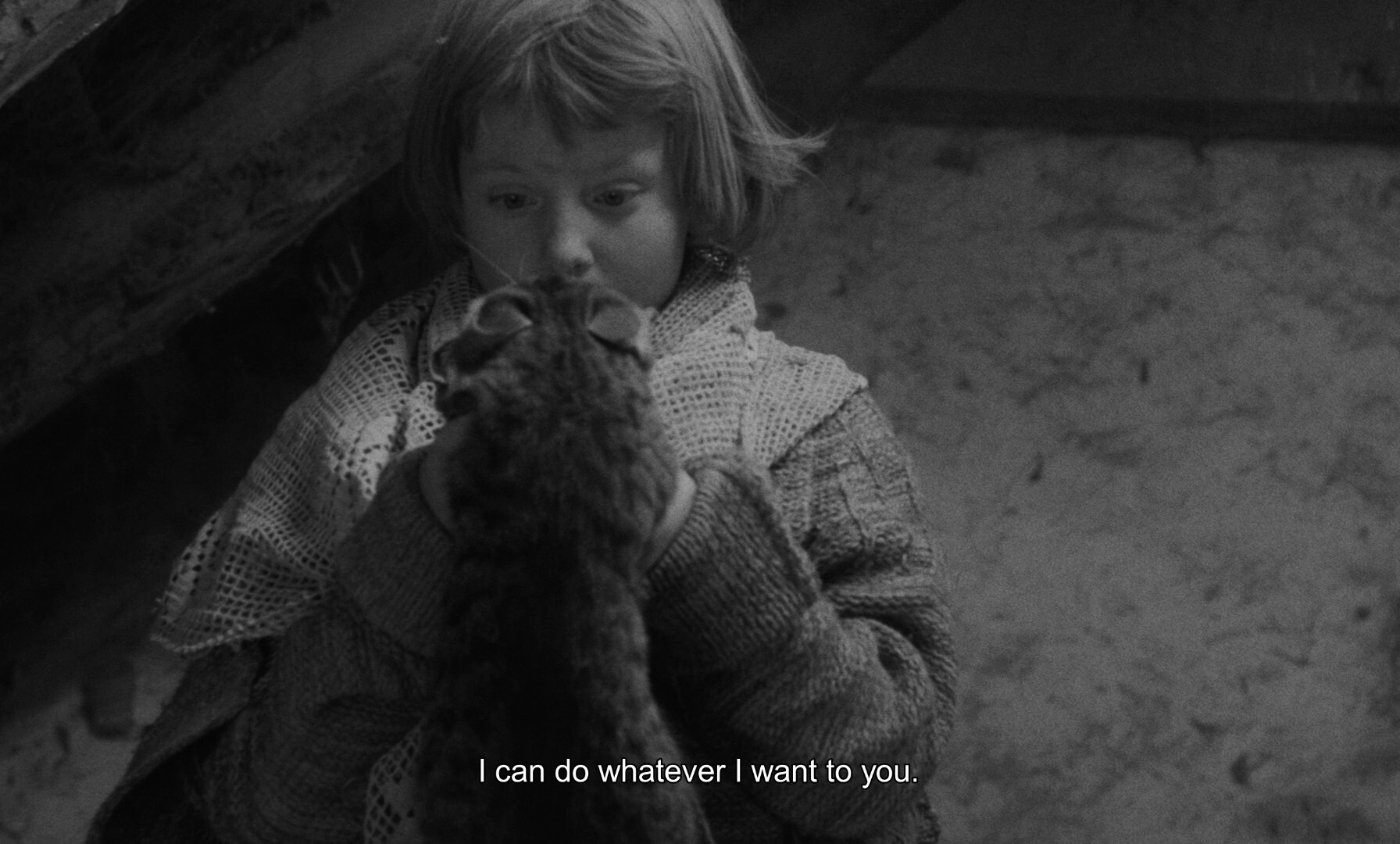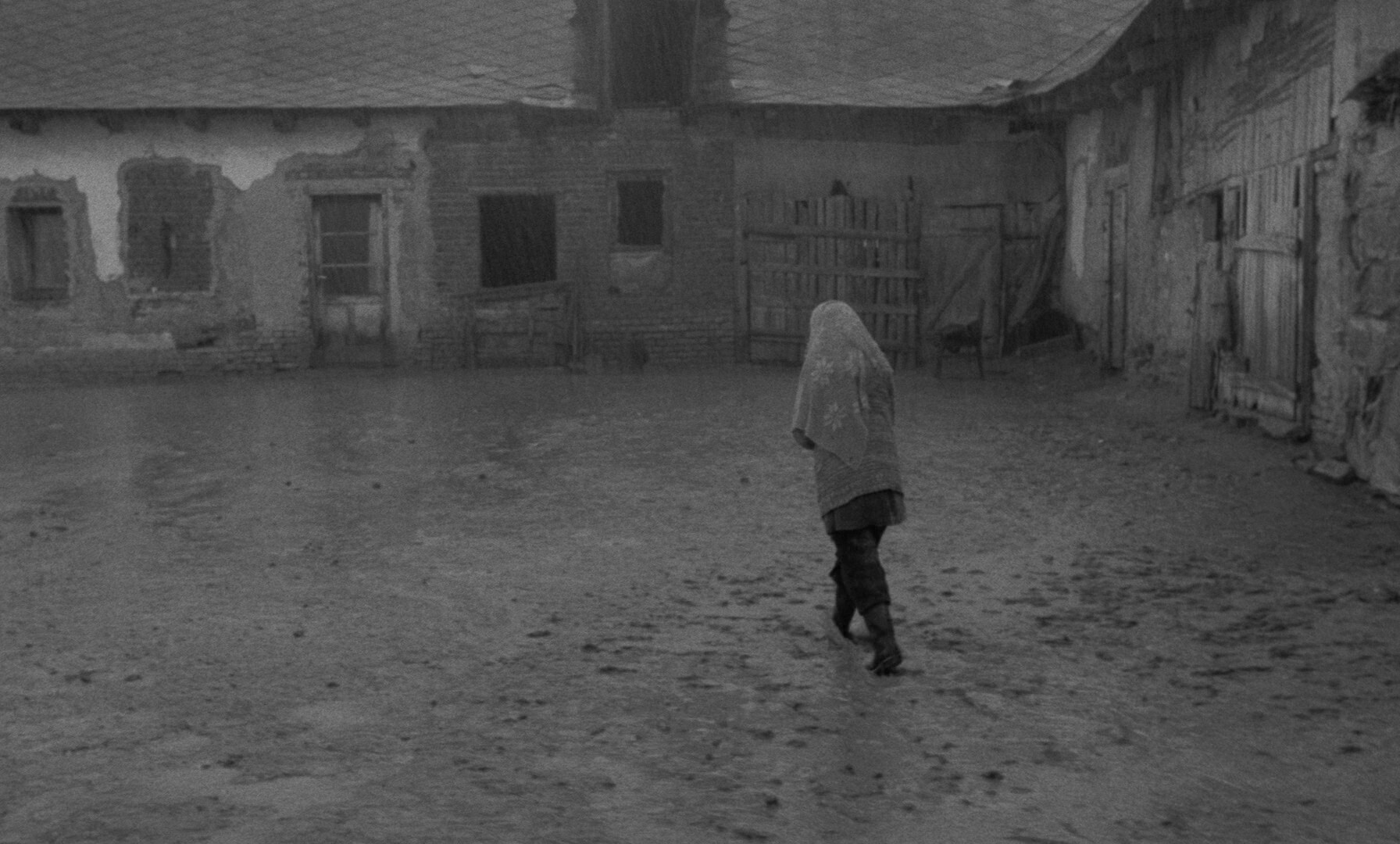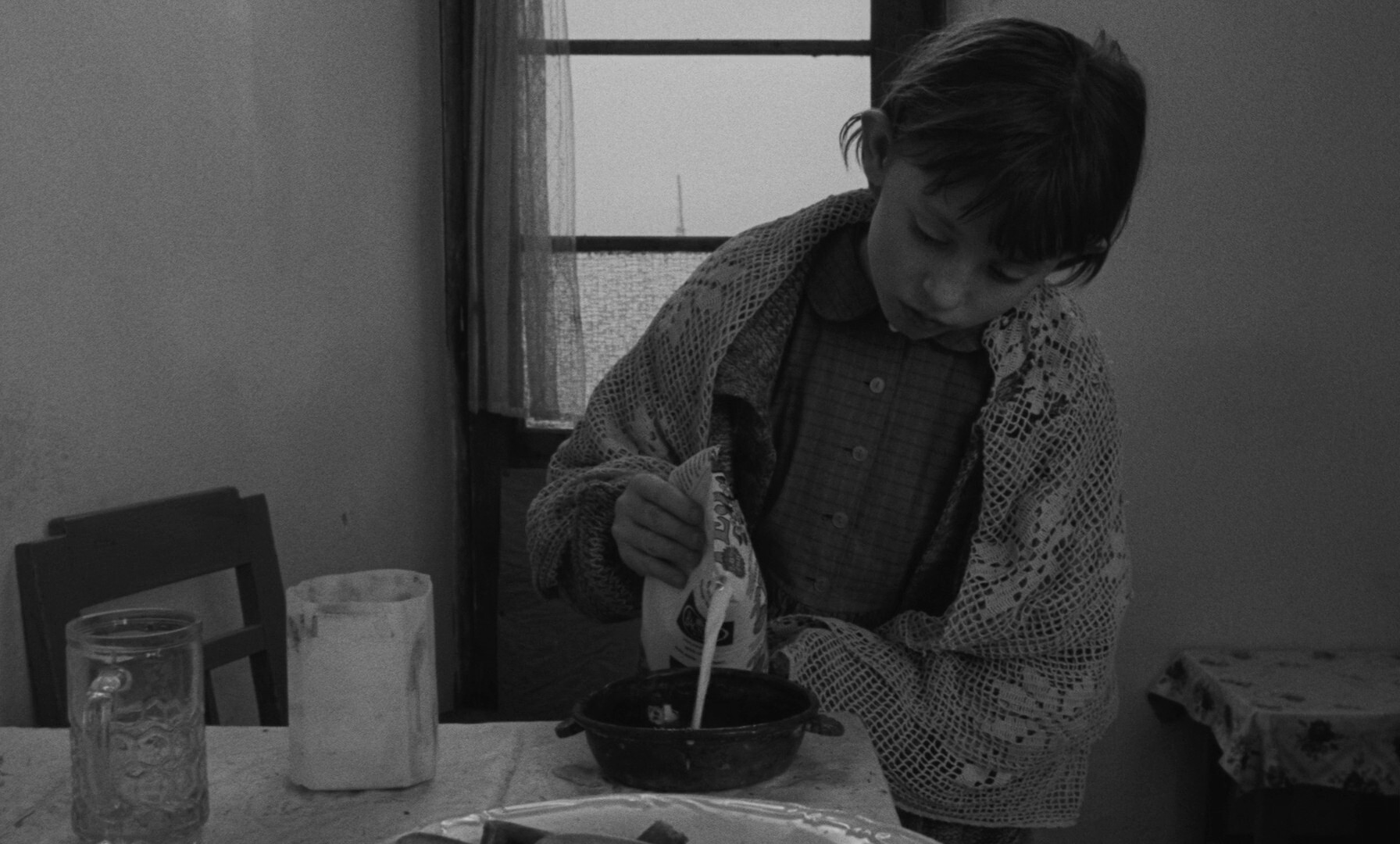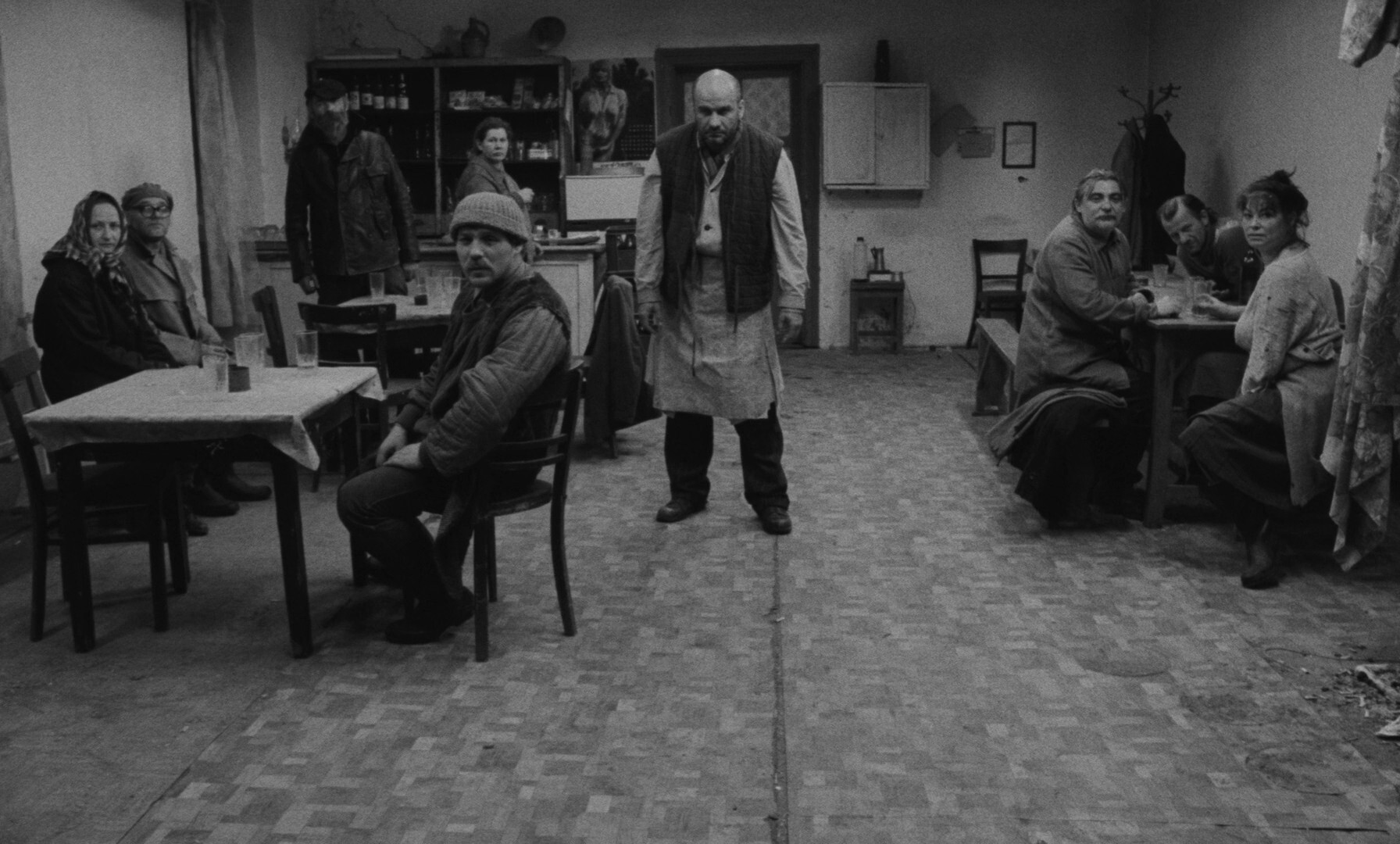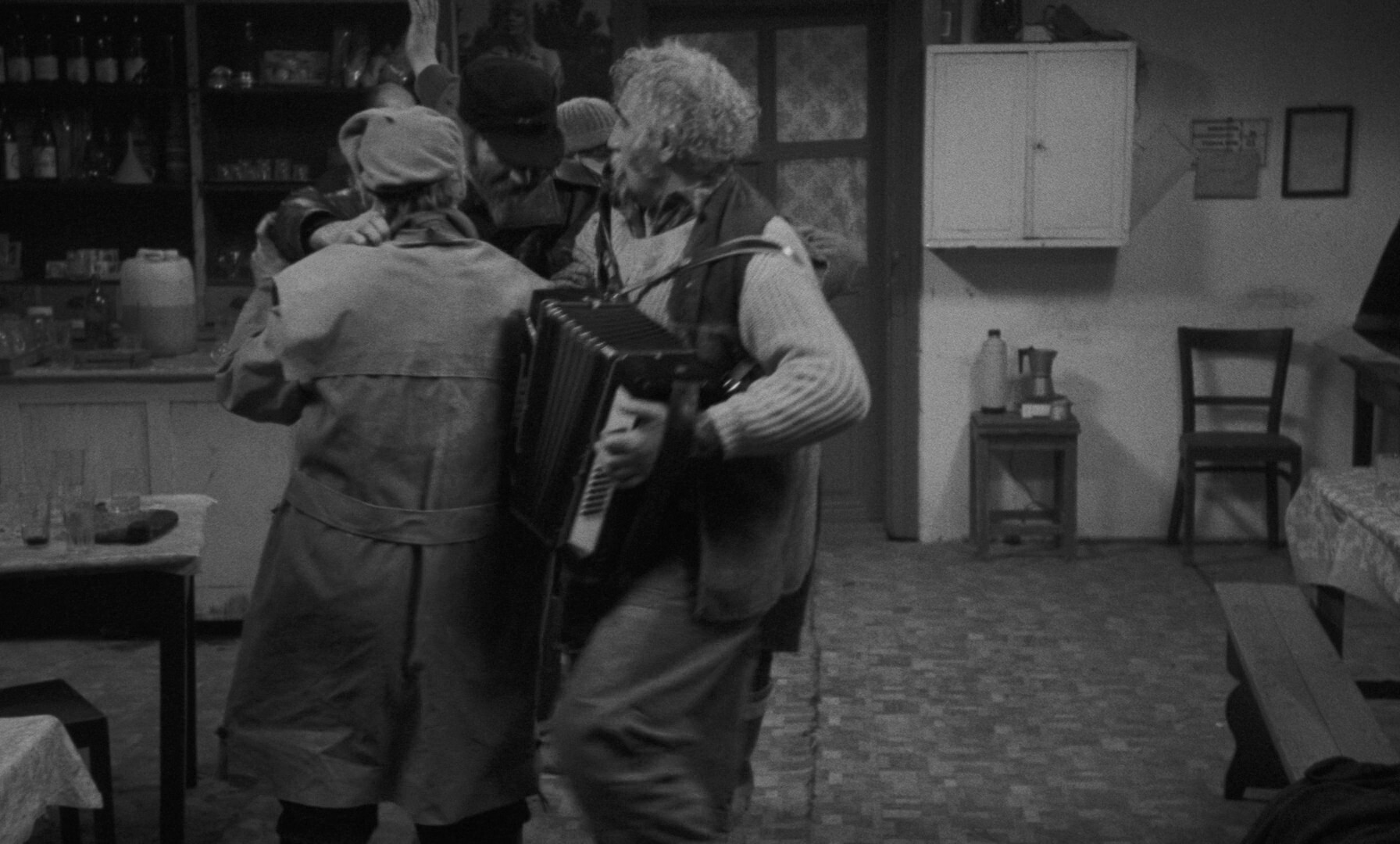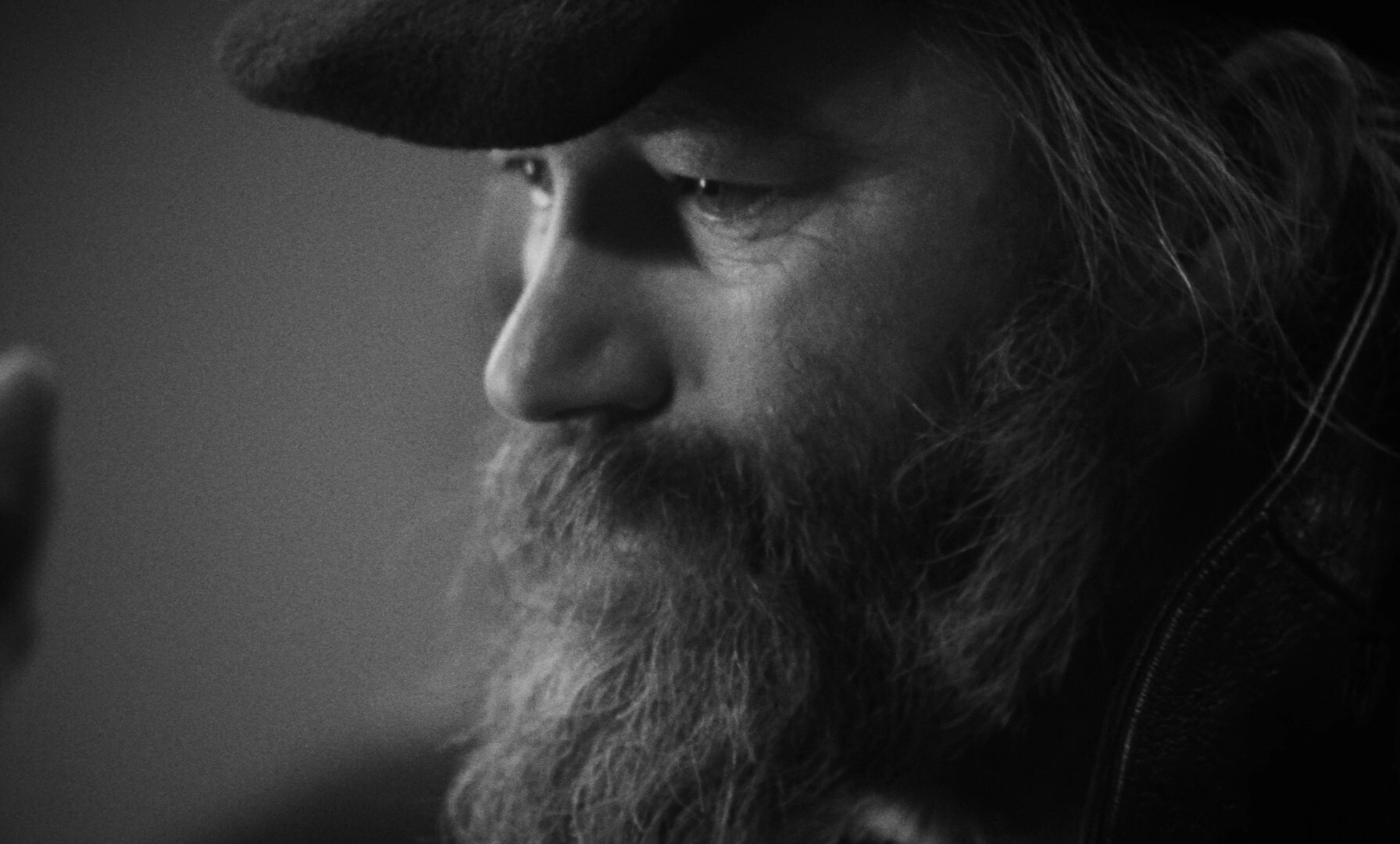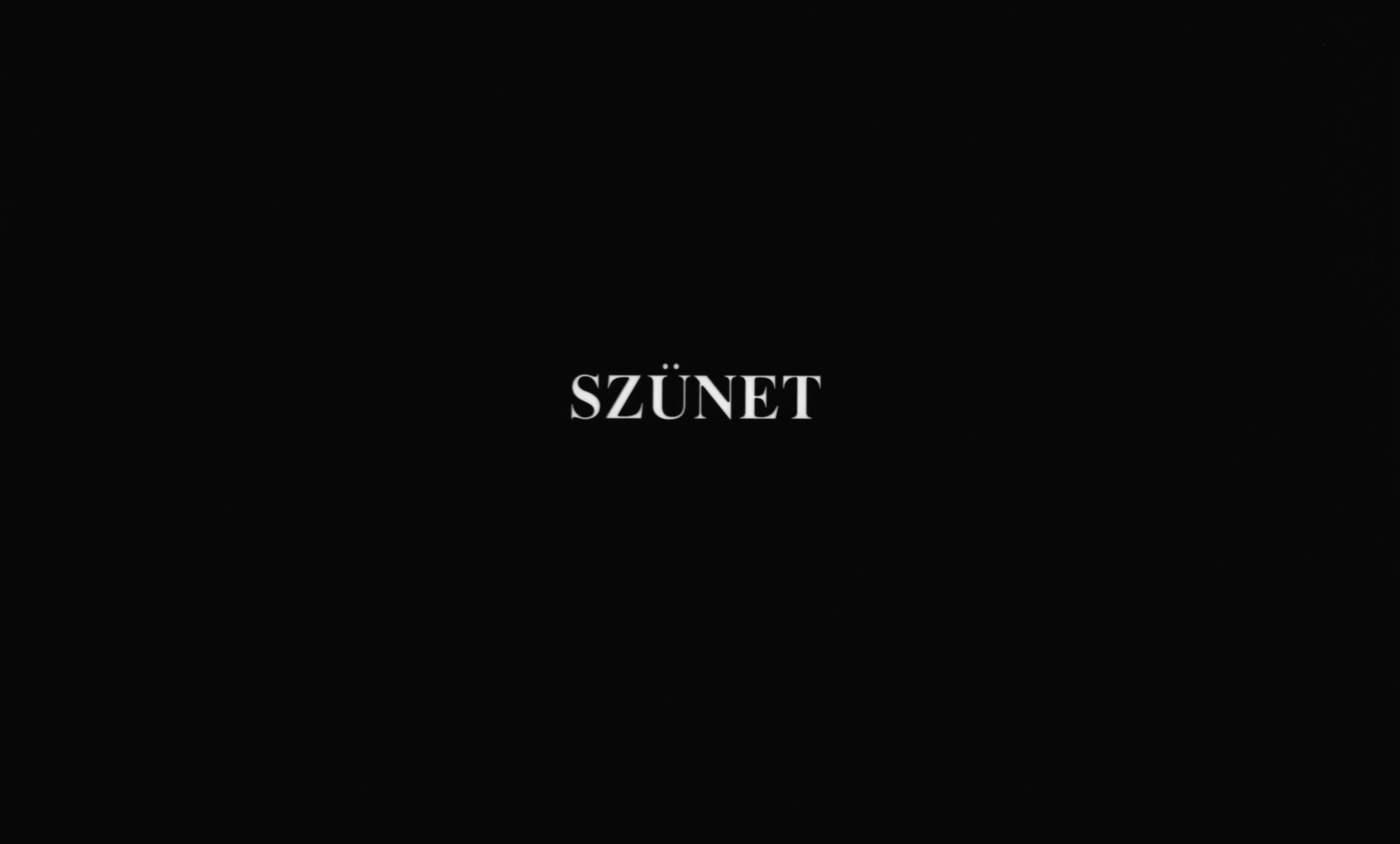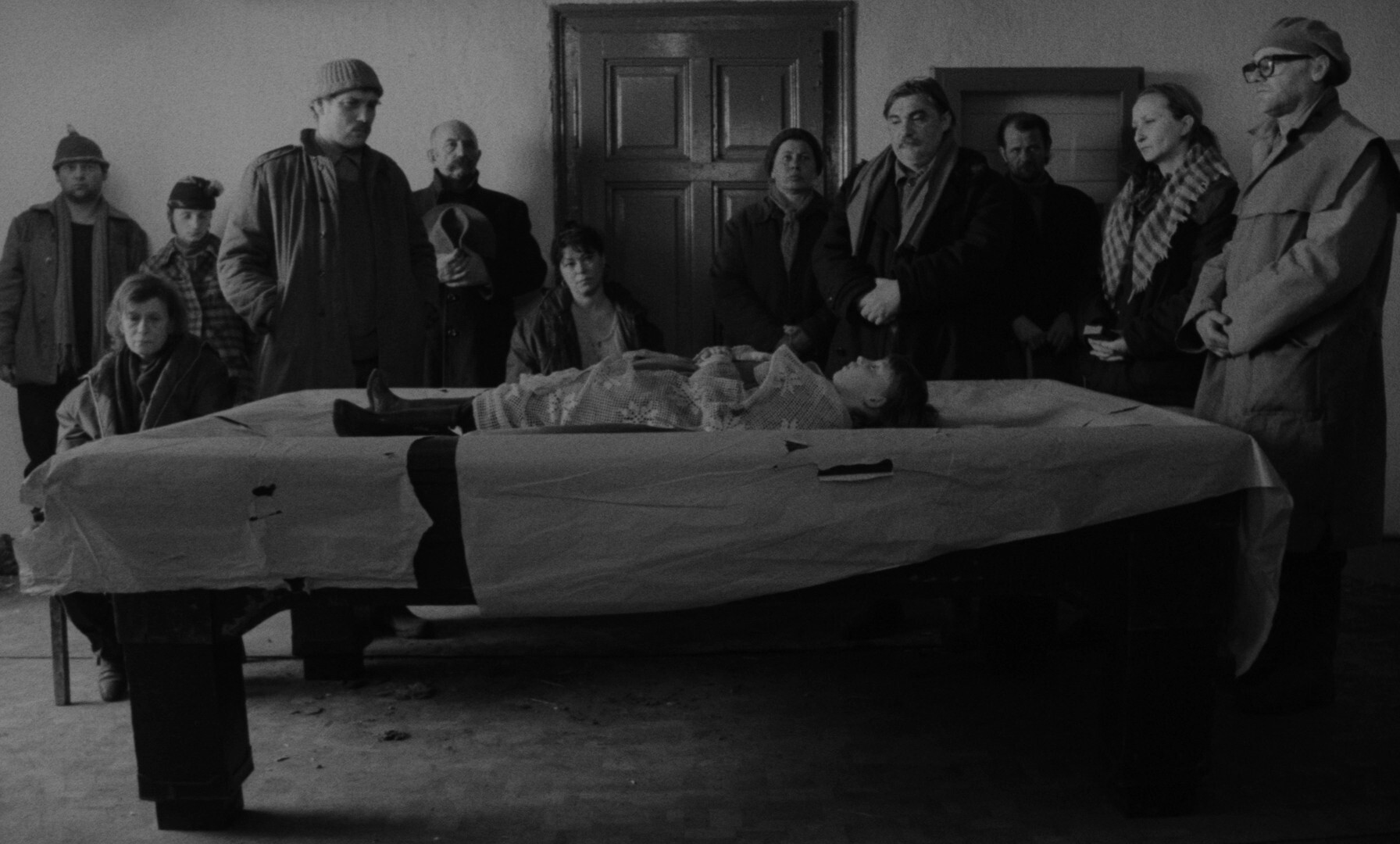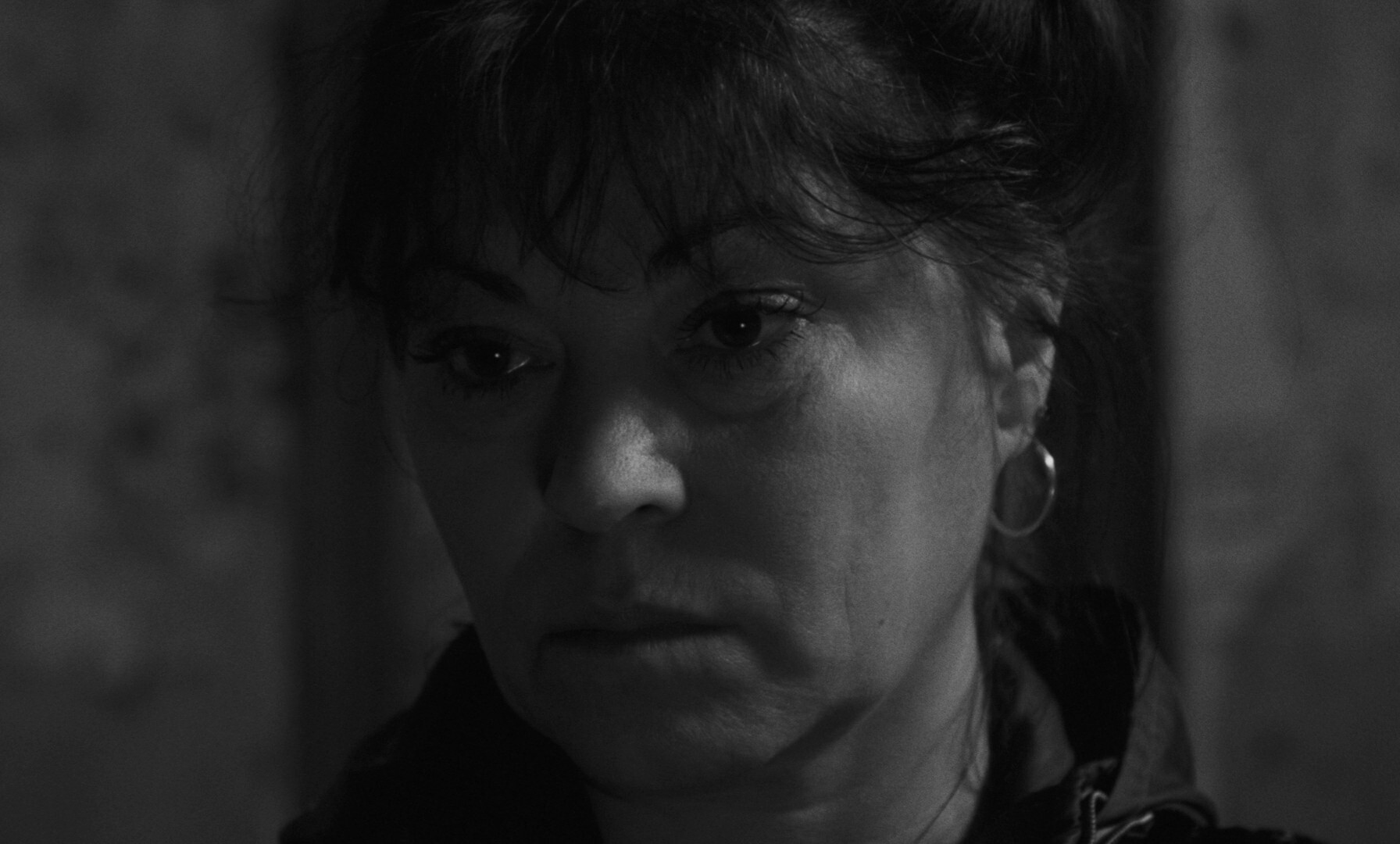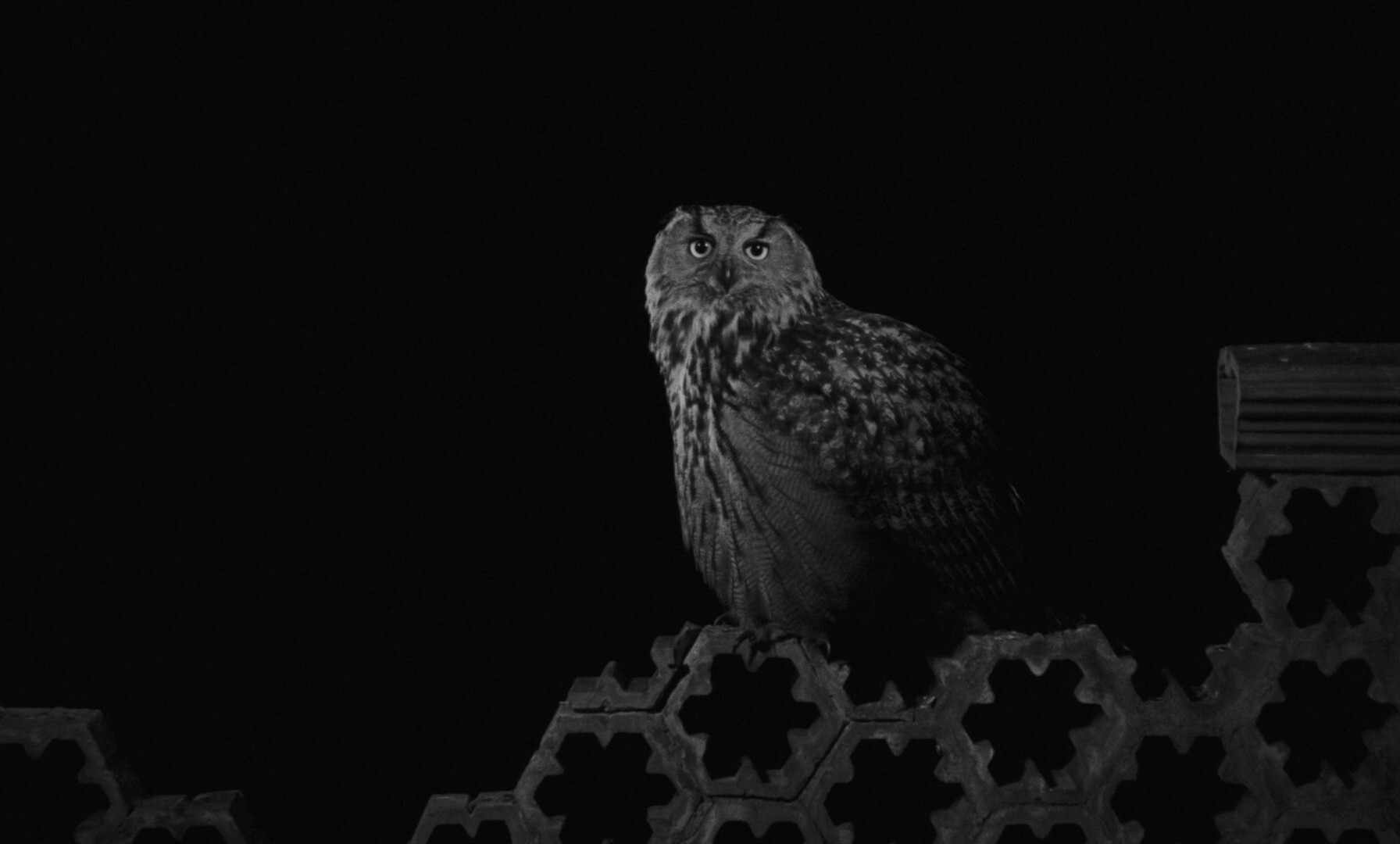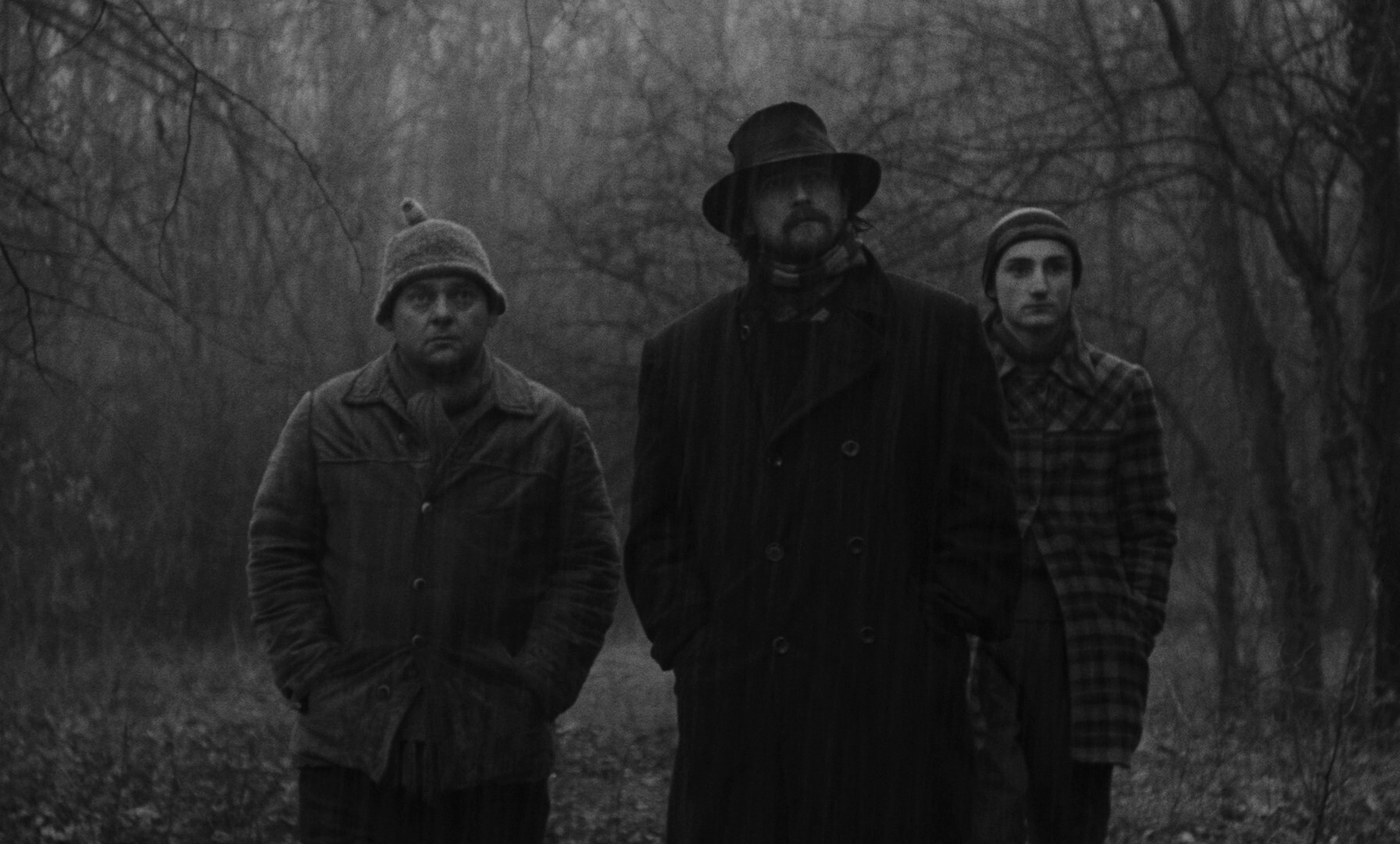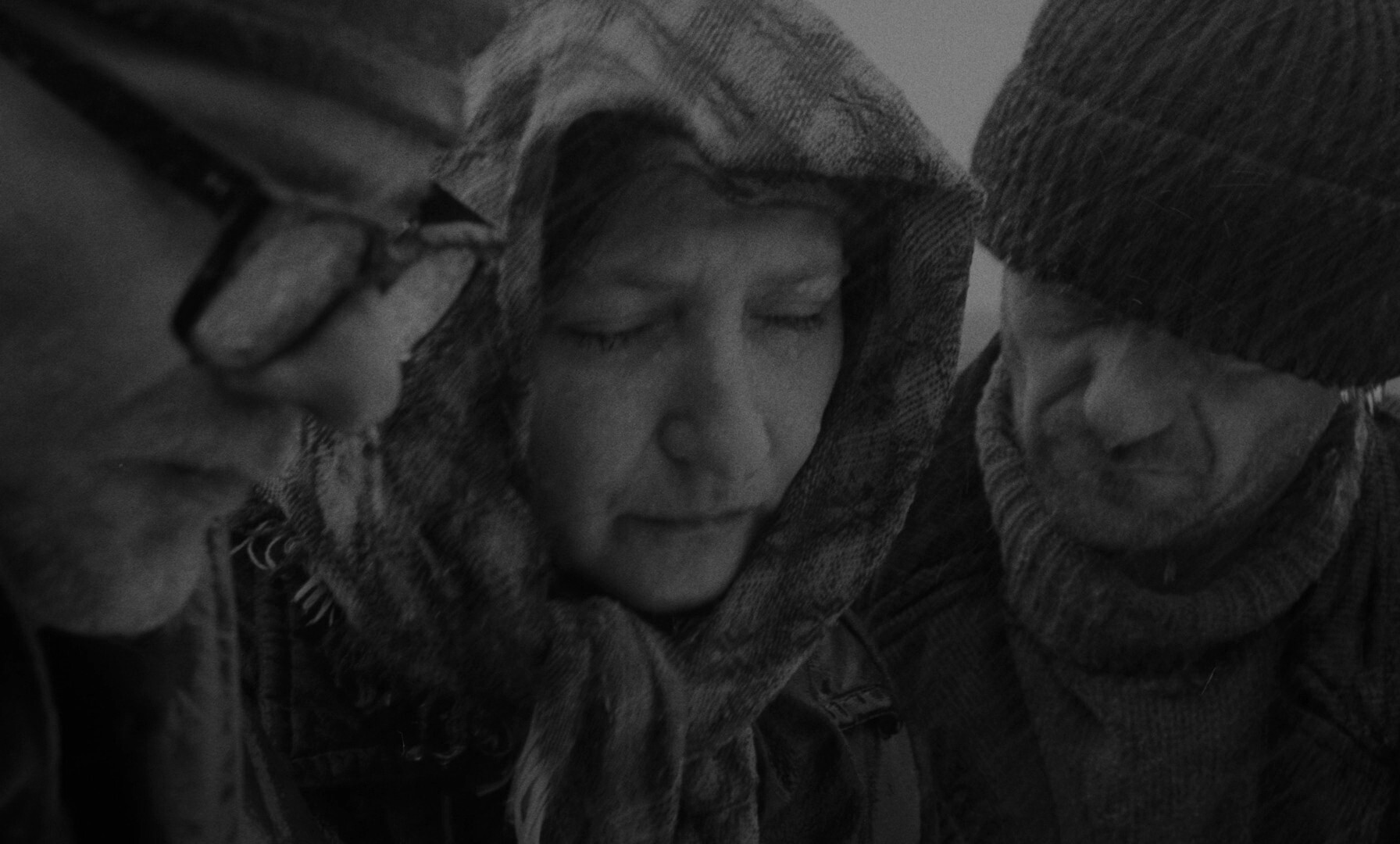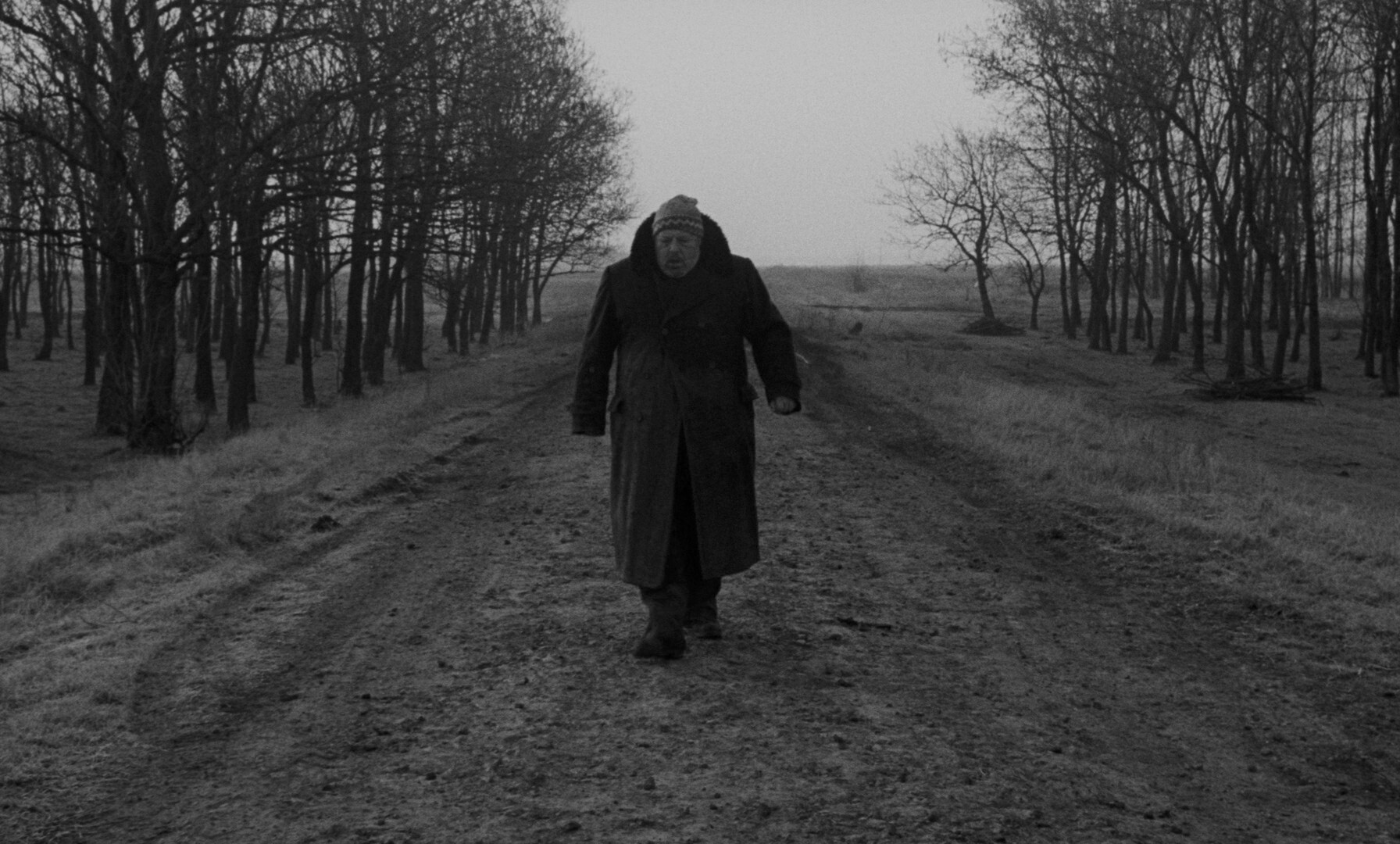I think I saw some Tarr movies back in the 90s, but if so, I don’t remember any specifics. But I have seen two of his movies recentlyish — The Man From London, which was OK, and Werchmeister Harmonies, which seemed to me like a parody of Eastern European art movies.
So I’m not really a Tarr fan, and I’m approaching this seven hour movie with some trepidation: Is this gonna totally suck? Is it a masterpiece? Is it gonna be just middling?
I guess that covers the possibilities?
But if this sucks, I’m not going to watch the entire movie. Just sayin.
I’m guessing Tarr is really into using natural light… we’ve been looking at this window getting gradually lighter now for a minute…
See? Lighter now.
OK, I’m getting “parody” vibes again…
Hey! Personal space!
I wonder whether Tarr’s entire idea of cinematography was somebody telling him once “never let any part of the image be overexposed! Never!”, so his lighting levels go from #000 to #bbb — with most things landing in a very dusky area.
There’s also so little contrast in his shots — everything is kinda washed out, which is very unusual for black and white pictures. Everything is soft instead of stark. It rather reminds me of pictures that have been shot in colour but then had the colour dropped.
PERSONAL SPACE HELLO
They’ve got pretty big rooms in their homes, but they prefer to stand in huddles while talking.
OK, I make fun, but I’m quite enjoying this movie so far…
It’s always raining in Hungary.
Whut!? Those are new people? Is this an omnibus movie?! Or are those the two guys who were rumoured to be arriving?
If it’s the former, I’ll feel cheated. I mean, stringing together a bunch of short films isn’t as much of an achievement as making a seven hour feature film…
I mean, longer movies have a tendency to combine several plot strains (like Noli me tangere), but that’s still a very different thing than watching a bunch of short stories, one after another.
Some of these actors are a bit rough — some just pop in to deliver lines as fast as they can, and others really chew the scenery. Perhaps Tarr is using non-actors for some of the roles?
It’s better when the characters don’t talk, because they only speak in the tritest of platitudes.
My fears were all for nought — it’s not a portmanteau film.
This movie must have had an enormous water budget — so many people standing around with hoses all night long.
Tarr works in the tradition of Tarkovsky, Bergman, Akerman… but while there’s some superficial similarities to them, the way he films stuff is really quite different. While those three are very careful about how shots are done, resulting in beautiful tableaux, Tarr’s shots doesn’t seem to strive for that kind of thing at all. And he moves the camera all the time, so while there’s long takes, we change what we look at all the time.
Heh; that’s certainly a distinctive taste in films…
(Why does nobody in this movie have an umbrella? Yes yes it’d ruin all the symbolism, but still! If this movie tells me anything, it’s that there’s a major business opportunity here: It rains all the time in Hungary but nobody has an umbrella! I’m setting up an umbrella franchise thing there toot sweet!)
Actually, I’m not quite sure this isn’t a collection of short films after all — I mean, the stories definitely interconnect (in this bit, this guy was spying on the two guys from the first bit), but perhaps it’s just going to keep on doing a new set of characters in each bit, vaguely referencing the previous bits?
Hey! That’s one third of the movie… it’s actually quite OK? At least so far.
I hope this is actually the second part — the blu ray splits the film into three files (because of size restrictions, possibly?), but I don’t have the menu structure here, so I’m just guessing at which one is next…
Oh, from behind he looked a bit like the protagonist of the third bit, but it’s not. So I guess we’re solidly in omnibus territory. So I guess there’s going to be about nine short films here? Oh well.
Hey! Now the plot from the first bit is moving forward?
Hungarian and Finnish are in the same language group, but Hungarian sure doesn’t sound like Finnish. Hungarian seems to share the phonemes with Slavic languages, while obviously not being a Slavic language.
Oh fuck off. If the only way you can make Deep And Important Films is by making your characters total morons, then fuck you.
Was this movie sponsored by The Tourist Board of Hungary? “Visit Hungary; see our beautiful mud”.
I was just waiting for somebody to torture an animal in this movie, but a cat? I wasn’t expecting that. They usually torture pigs or cows in films like this (i.e., Eastern European art films).
(The animal torture in these films is always Very Symbolic. But not so much for the actual animals being tortured on screen, of course.)
We move onto the delicate subject of Sátántangó’s notorious cat scenes, in which a neglected young girl, Estike (Erika Bók), rolls, tosses and frolics a cat around the concrete floor before poisoning it to death. This sequence remains a source of controversy to this day. When the issue of the animal’s welfare is raised, Tarr jolts upright in his chair, noticeably bristling, as though this is the first he has heard of such a concern.
“Are you crazy?” he snaps. “I had two cats at home. Can you believe that I would kill a cat?! Never! First of all, we knew the cat scene [was coming] and we knew that the cat would have to rehearse with the girl. Every day in the hotel room they would do this kind of ‘turning’ game. By the end, the cat was used to this and did not care.”
No, it hated it.
A DOILY IS NOT AN EXCELLENT CHOICE AS A RAINCOAT
Hey, they have milk in plastic bags, just like Canadians do…
Oh, OK… we’re basically going over more or less the same time period (the same day) seen from a lot of different points of view. I’m not sure it’s exactly the same time period, and this does not have a Rashomon vibe at all, but I guess that’s it.
Practical! A vomitorium outside the bar with locally sourced recycling built in.
But again, perhaps a tarpaulin or something? Would that be too much to ask?
That the sound was done later (and not recorded when they shot the film) isn’t really obvious in most scenes, but it’s very plain in scenes like this. (But then again, there are that many scenes where we see people talking (where the voice actors have to match up)…) The foley work is excellent.
But this section of the film (dancing in the bar) is the first one that is actually boring. I assume that’s on purpose, because it’s tedious beyond belief, and that doesn’t happen by itself.
There are long films where you go, halfway through, “oh I get it now!” And then there are films like this, where you go “ok, we get it now… we get it… WE GET IT”.
I think this movie ran out of things to say about an hour ago, so somewhat ironically, when it stopped being short-film-Rashomon and started moving the plot forward, the movie lost most of its charm.
In interviews, Tarr is adamant that he’s against symbolism and metaphor, so I guess the only reason everybody’s so wet all the time is that they’ve never heard of cheap plastic raincoats?
And the ending? *rolls eyes* Such meta.
Because it was a minimum six hour long movie, that was sure at the beginning. And we thought we couldn’t make a linear, six hour-long story without any break, and we decided immediately, let’s go back to this chapter structure. And we also thought, what if nobody wanted to distribute it, then we would have 12 short movies. Twelve chapters, this is very simple, and at the end of every chapter, we will use some sentence from the novel.
But is it any good? Uhm… I enjoyed the first half. There are parts that don’t work, but there’s a whole bunch of scenes that have real nerve. Taken all together, it’s a bit risible — it doesn’t really make much sense, and watching something this devoid of actual humour for seven hours is a bit much. (Tarr makes fun of the characters, but it’s not exactly knee-slapping material.) The relentless grimness isn’t exactly unrealistic — these people could well exist? But all in all, it’s hard to keep your (i.e., my) eyes from rolling when Yet Another Scene Of Grim Poverty appears. At some point it stops being interesting and just becomes voyeuristic.
Sátántangó. Béla Tarr. 1994. ⚂
This blog post is part of the Officially The Best 2022 series.
